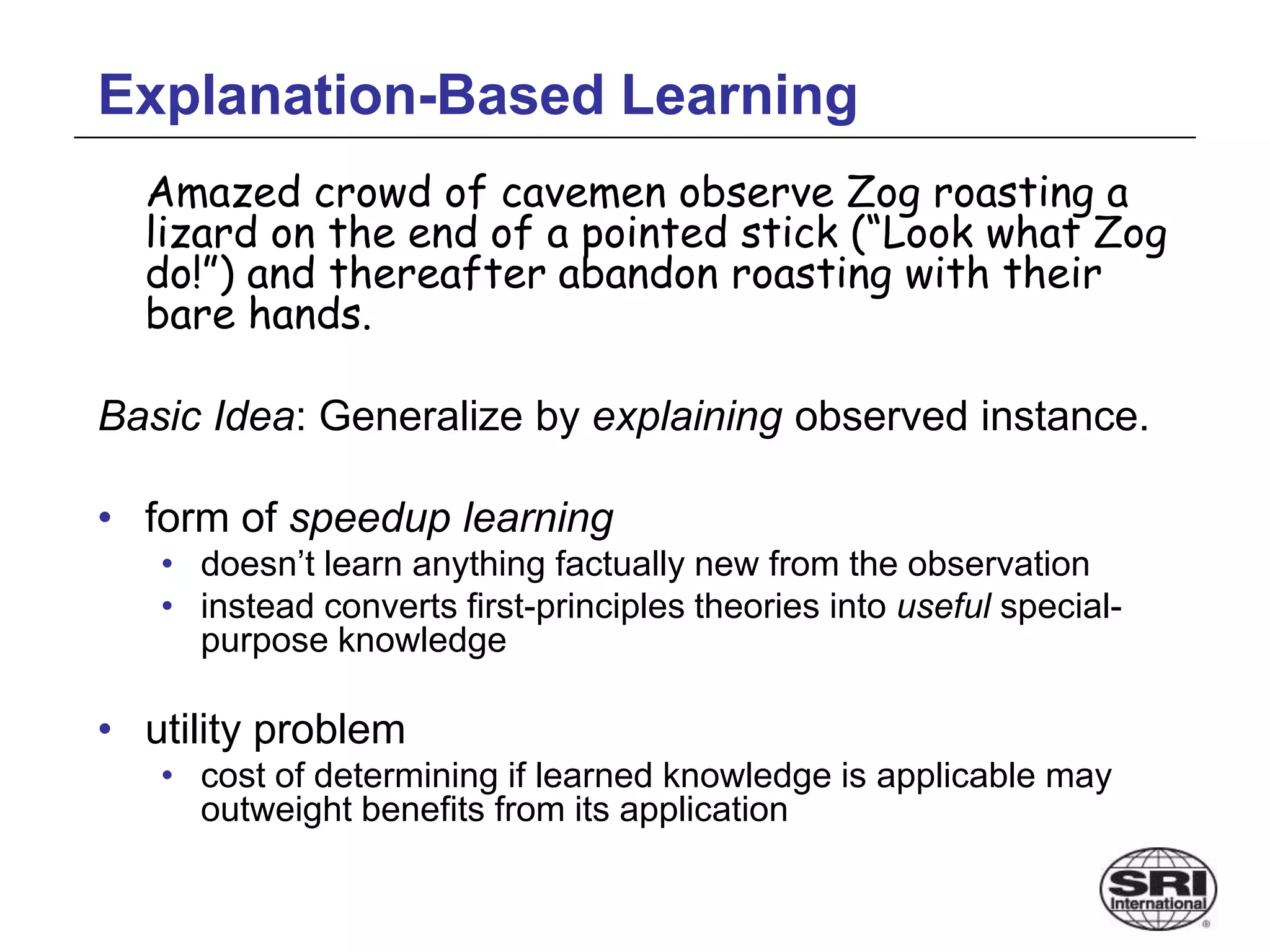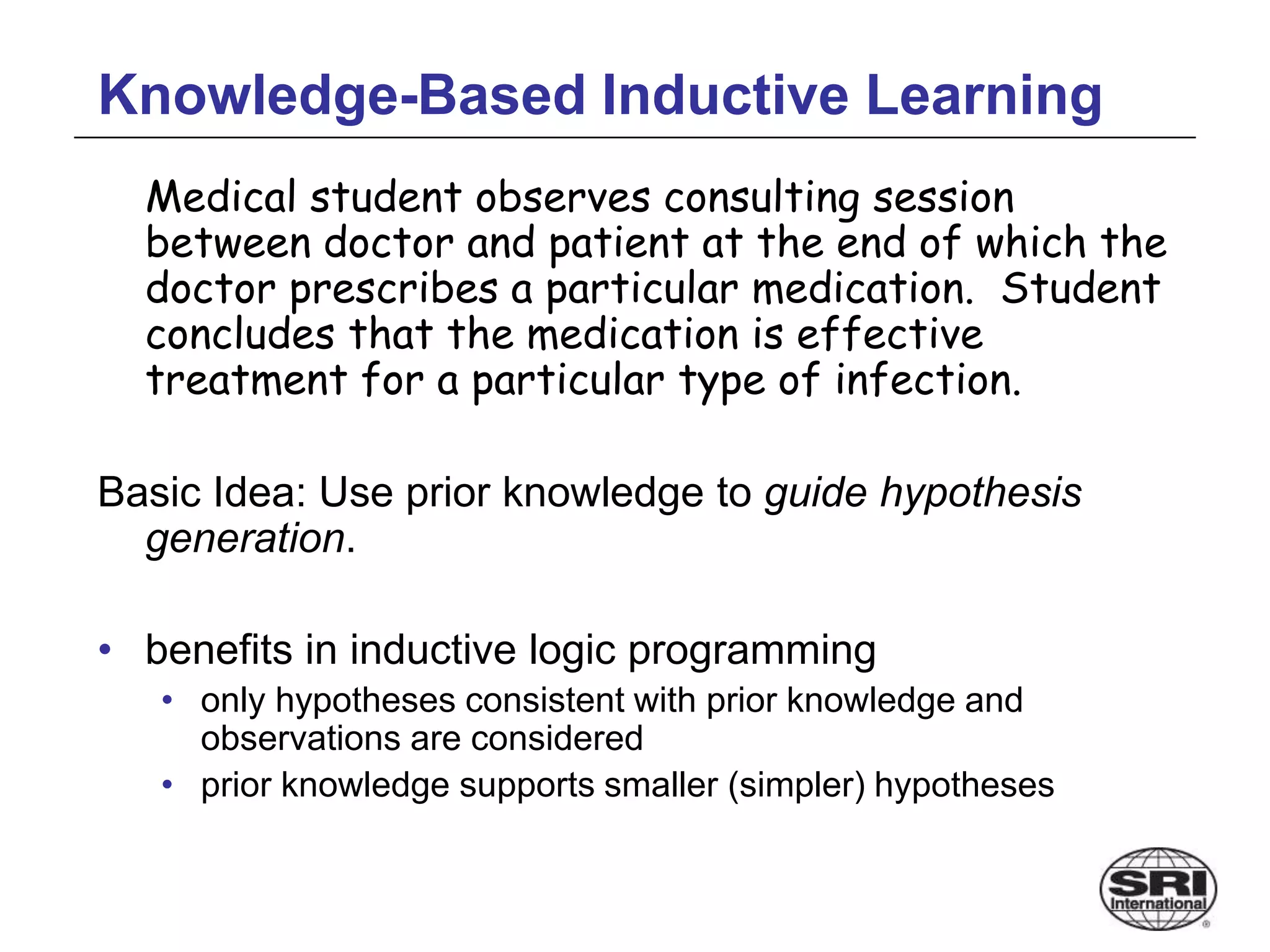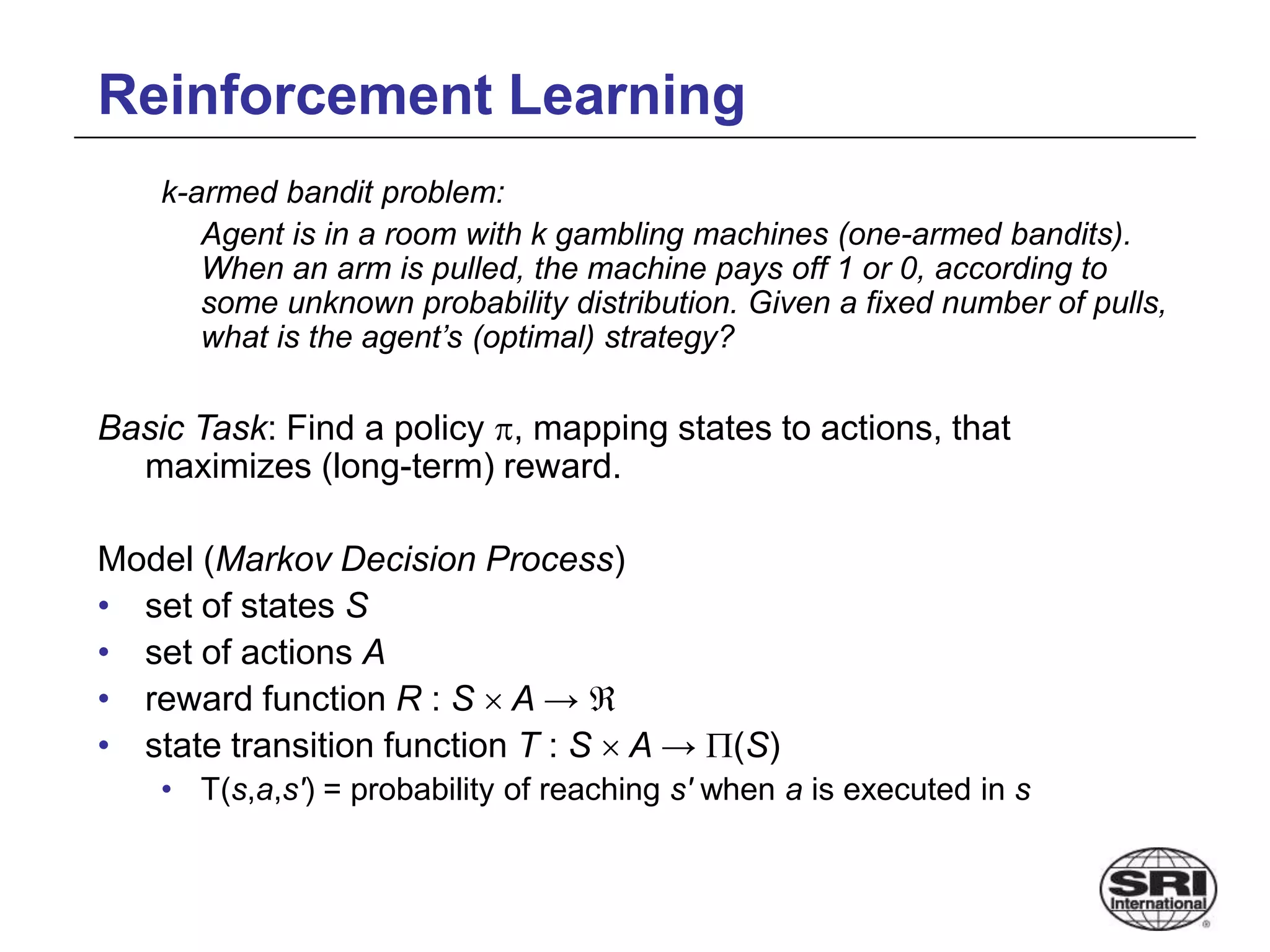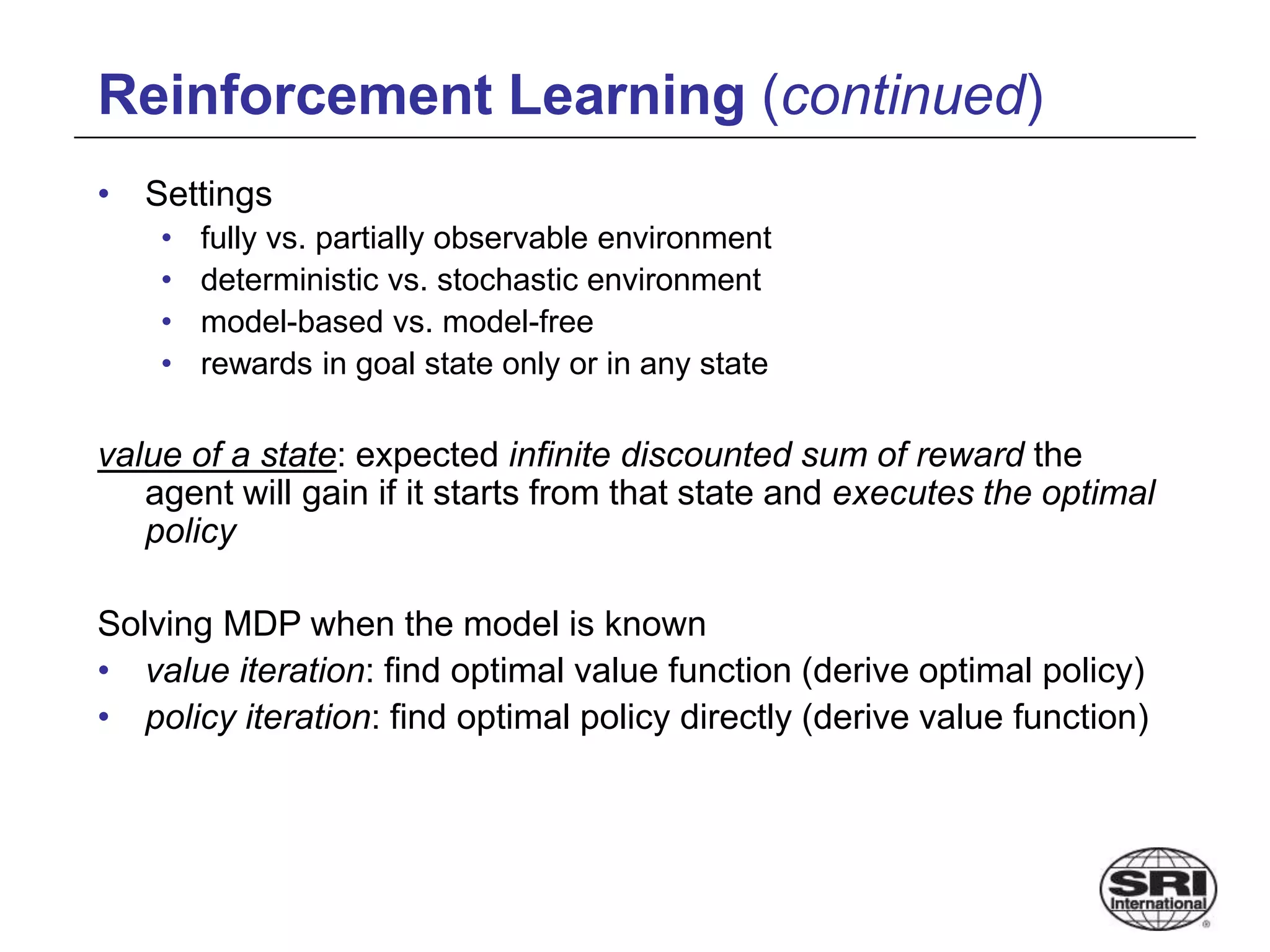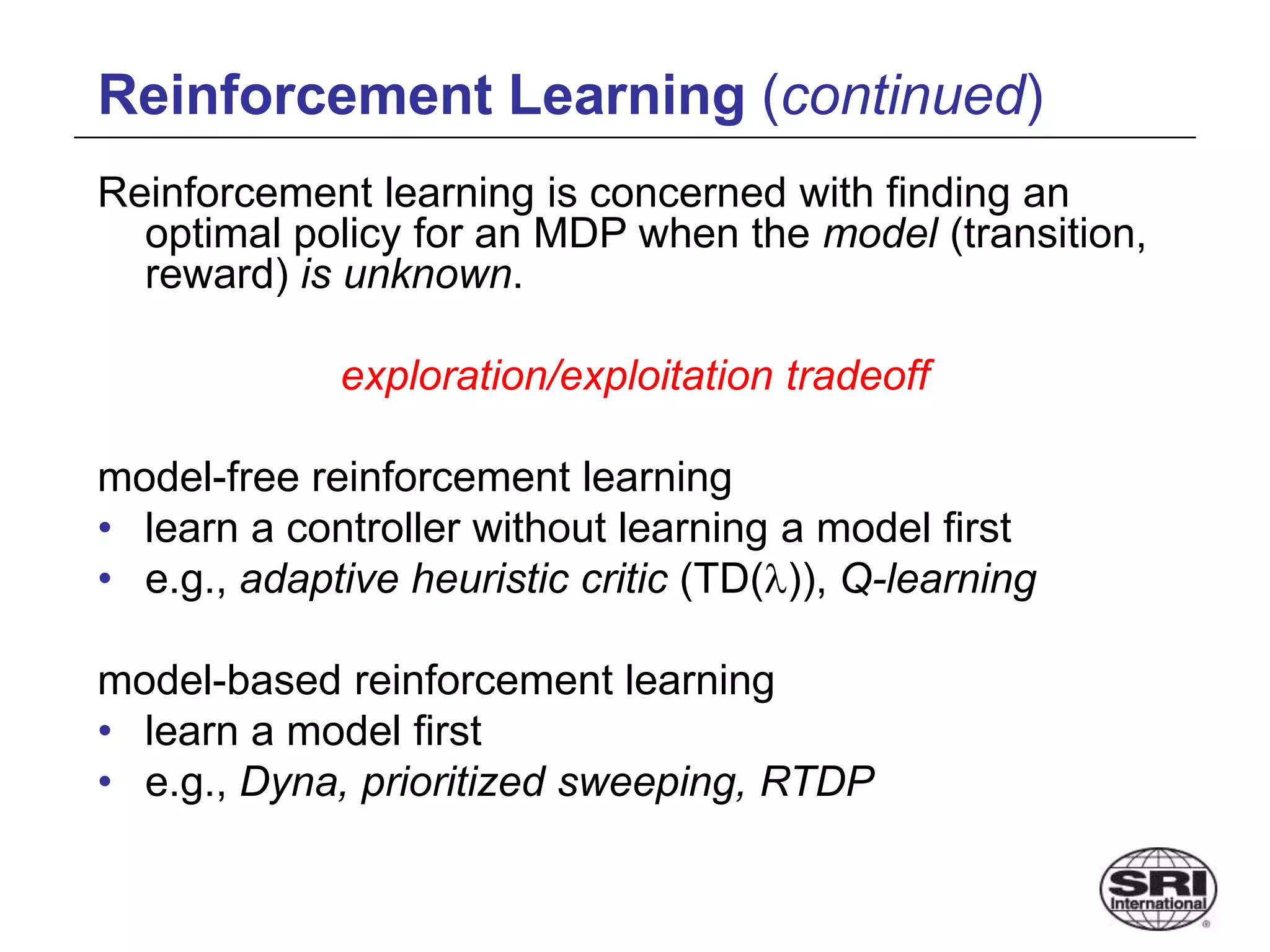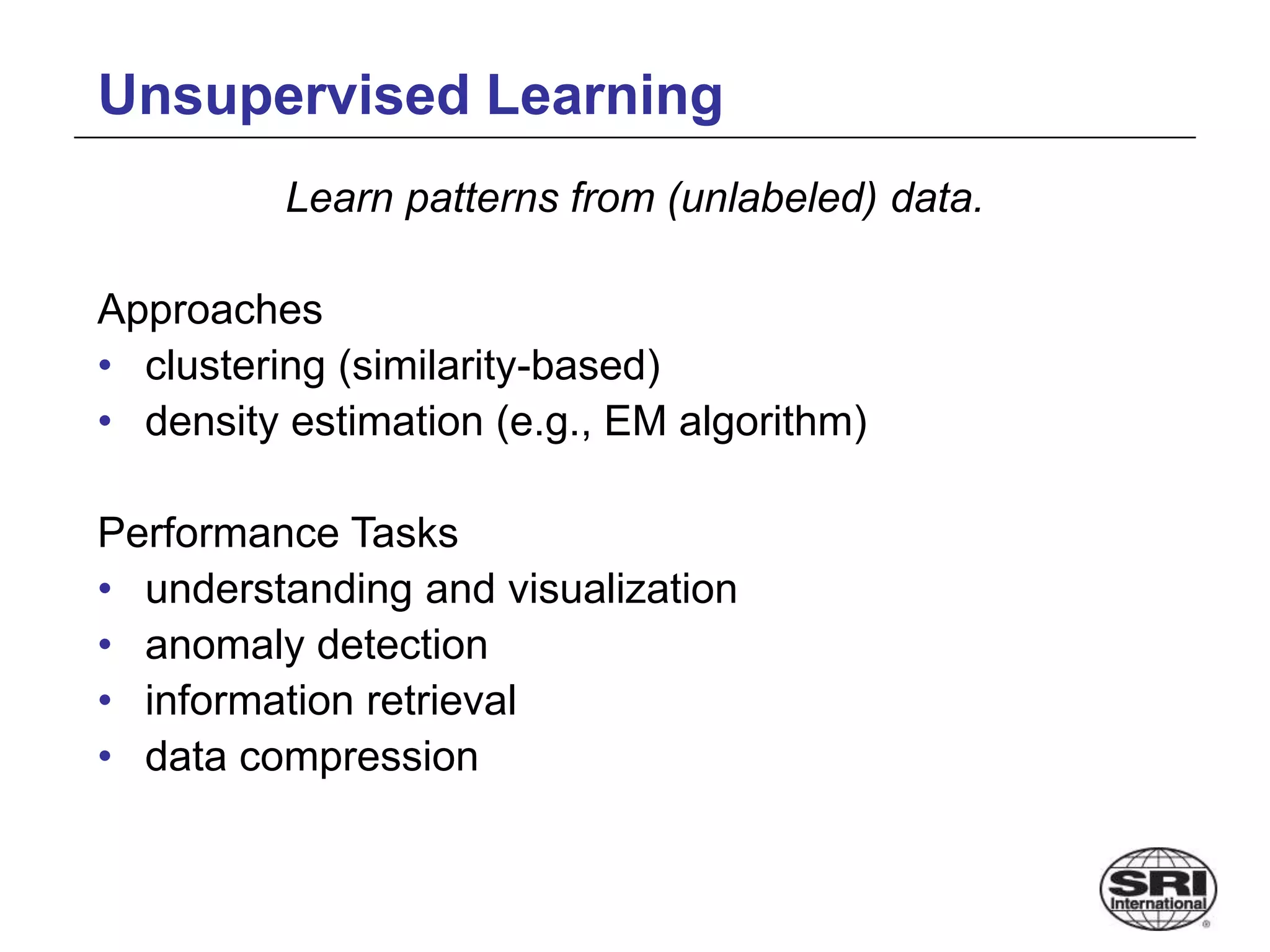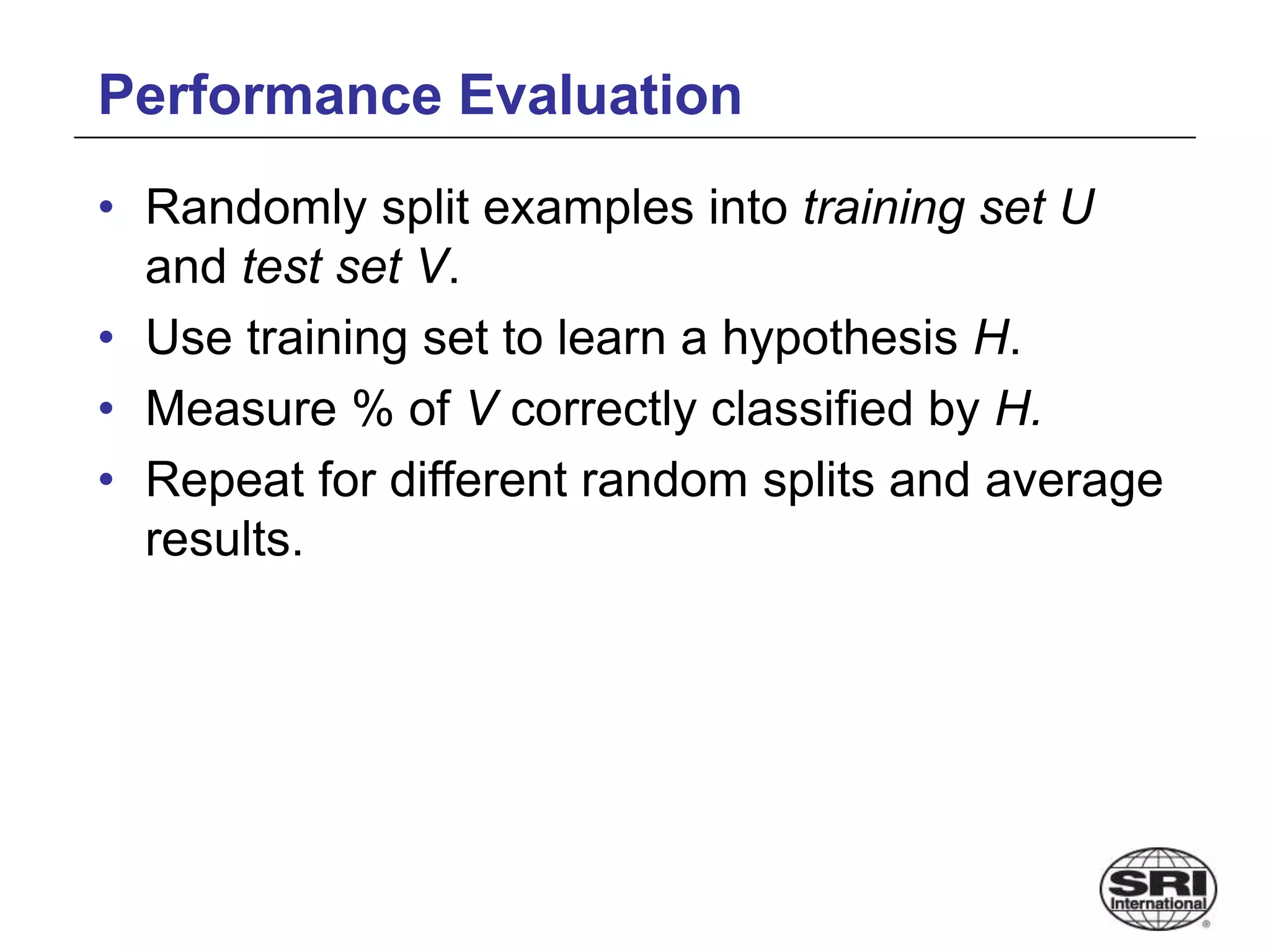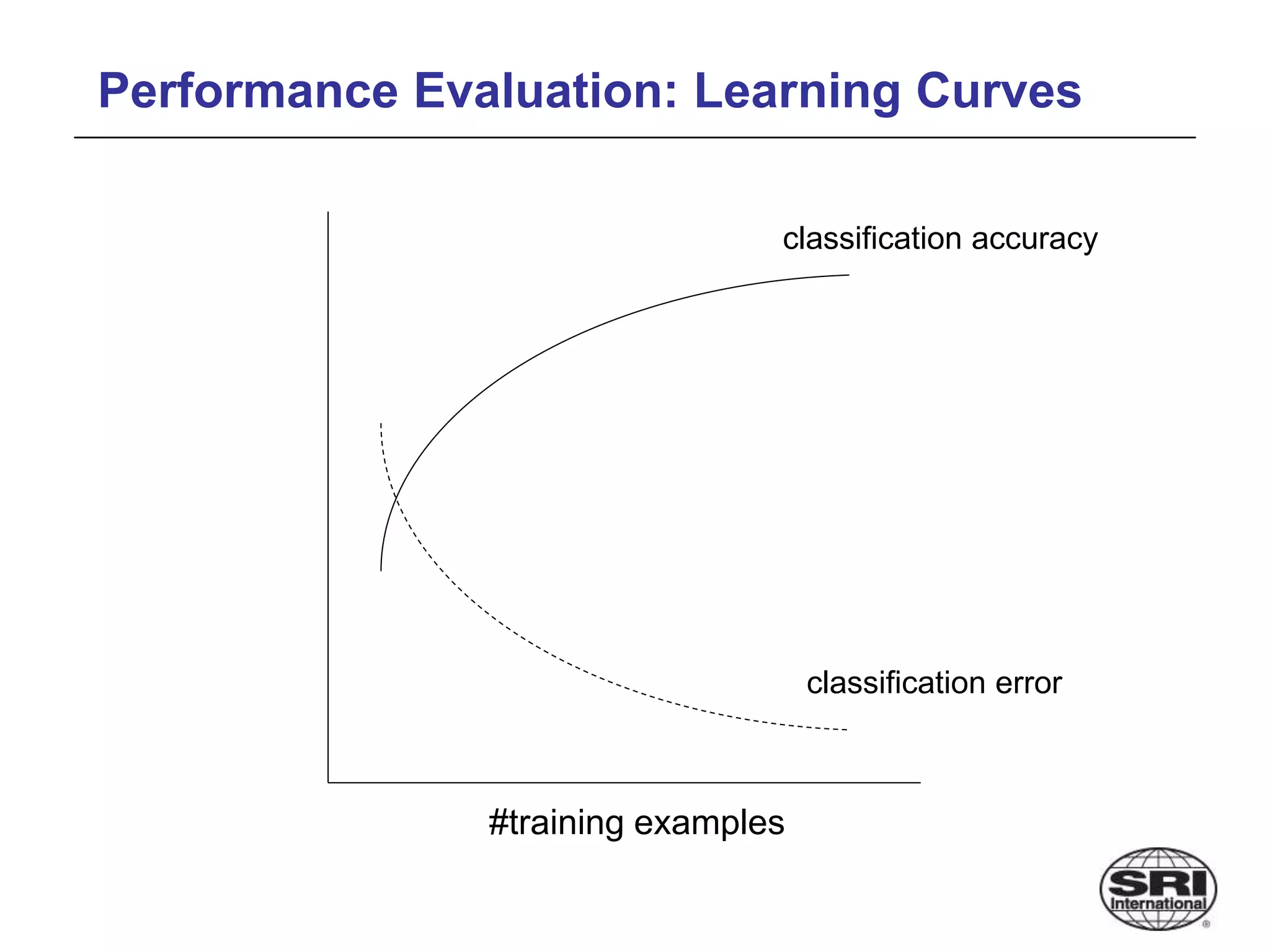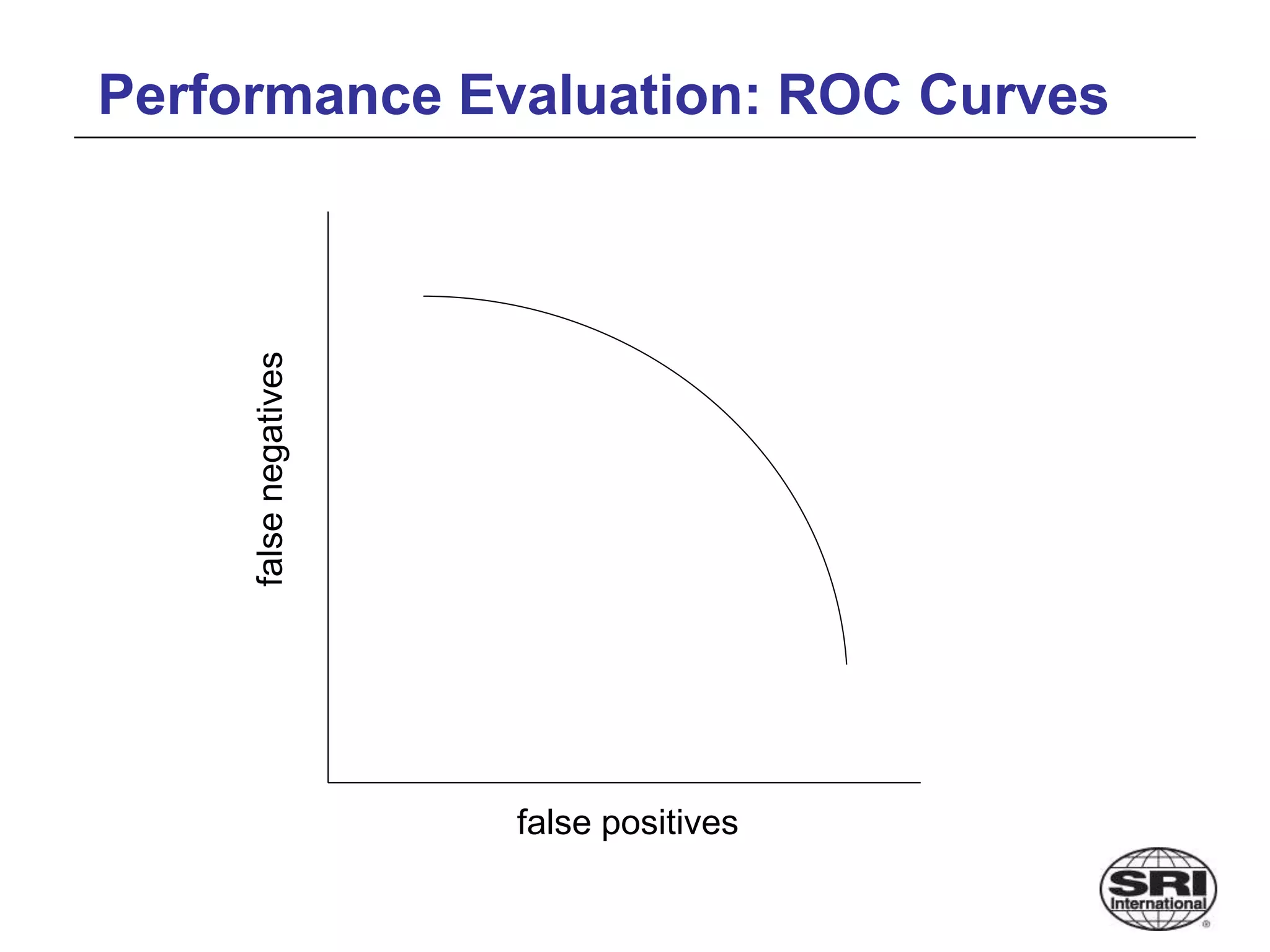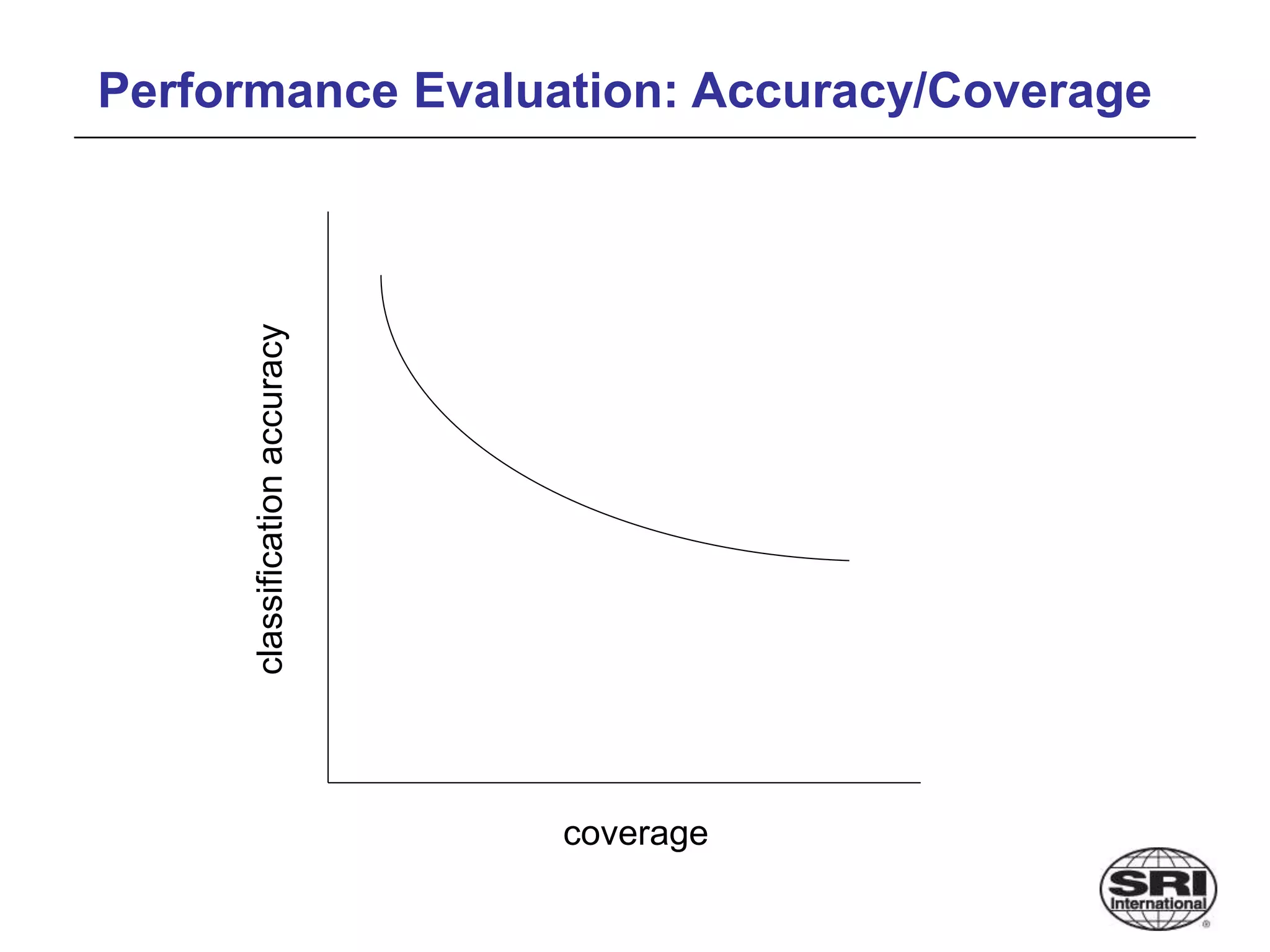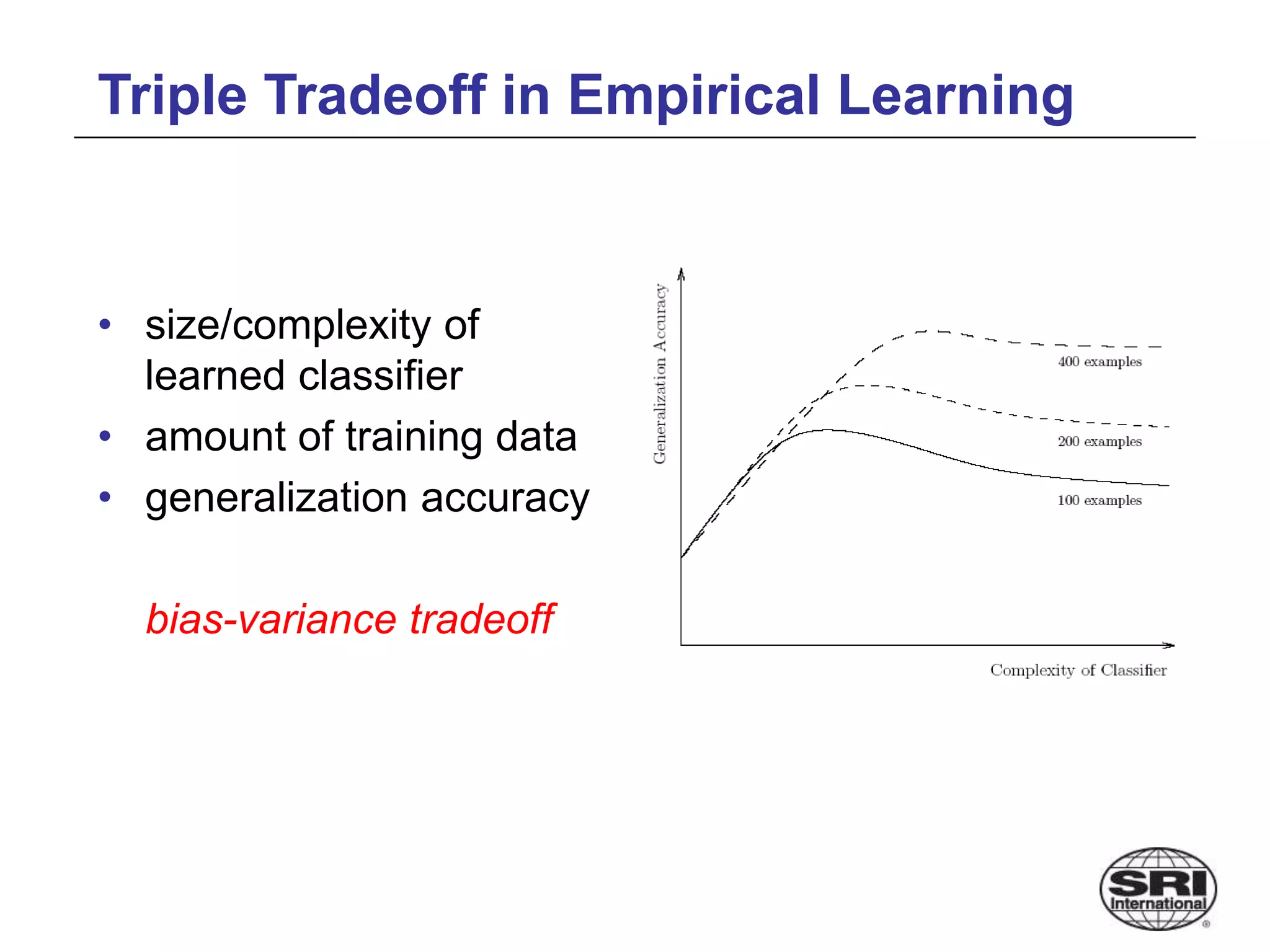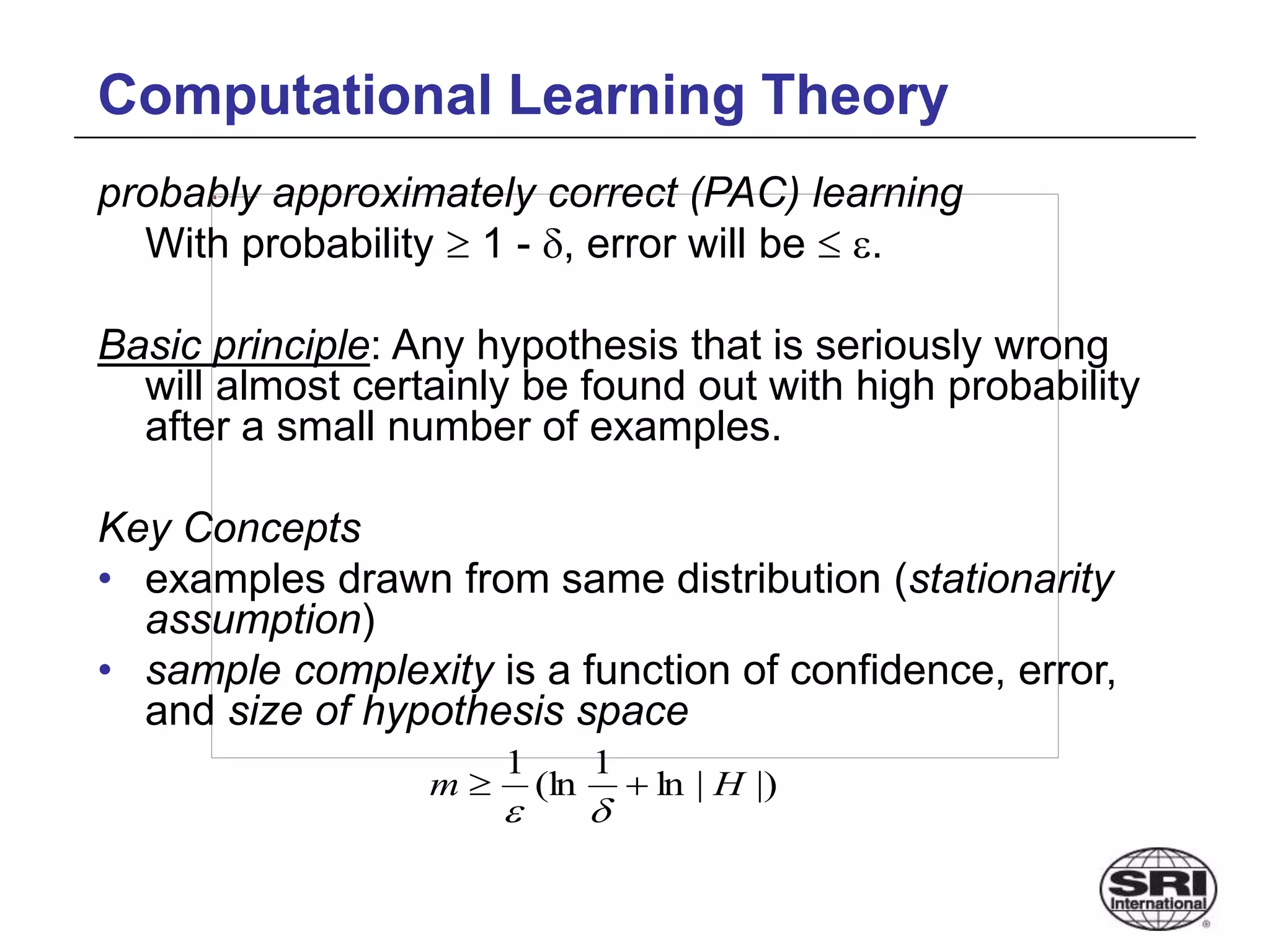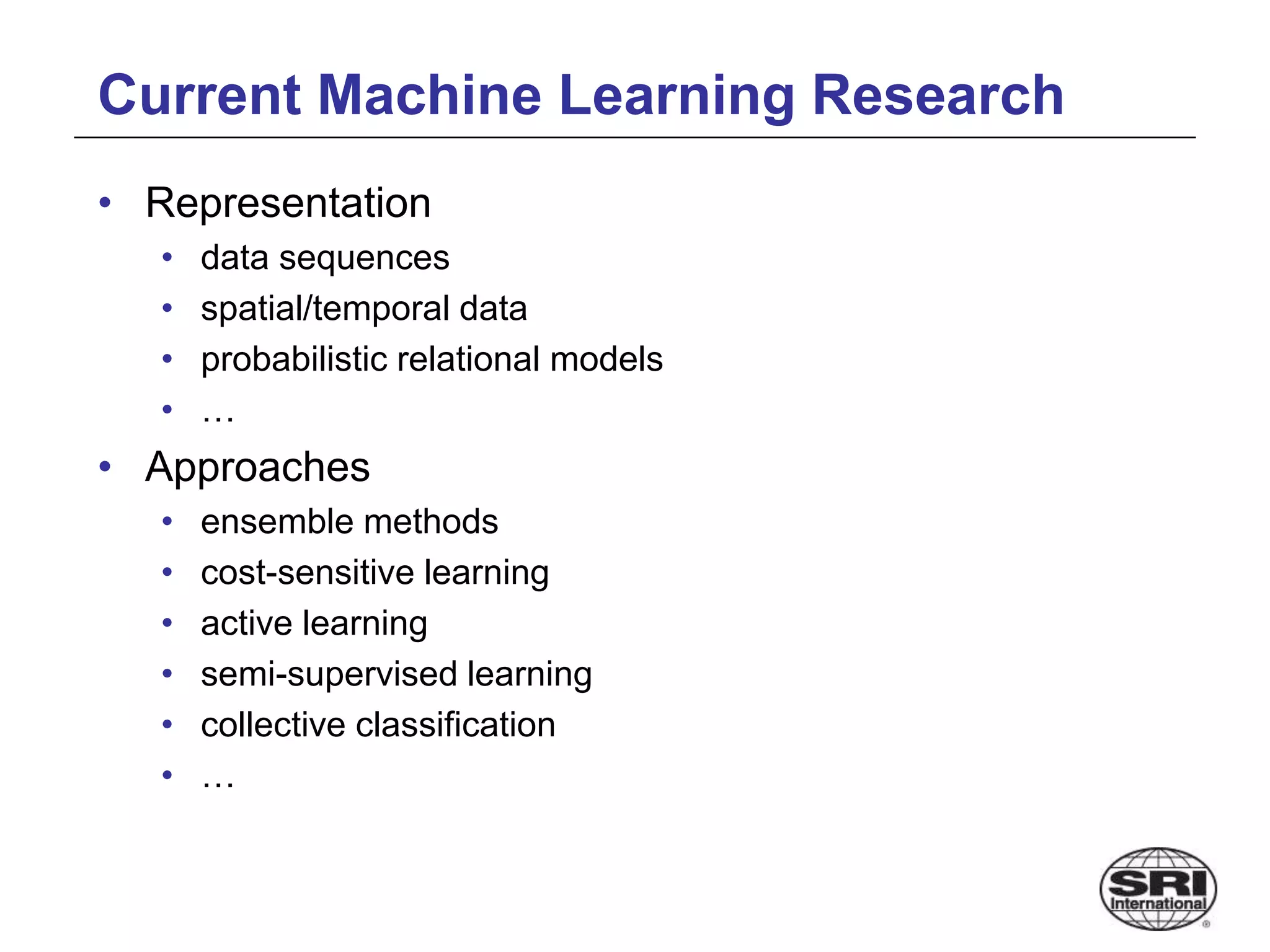This document provides an overview of machine learning. It defines machine learning as a system that can acquire and integrate knowledge autonomously. It discusses several machine learning paradigms including supervised, unsupervised, and reinforcement learning. It also describes popular machine learning algorithms like decision trees, neural networks, support vector machines, Bayesian networks, and nearest neighbor models.
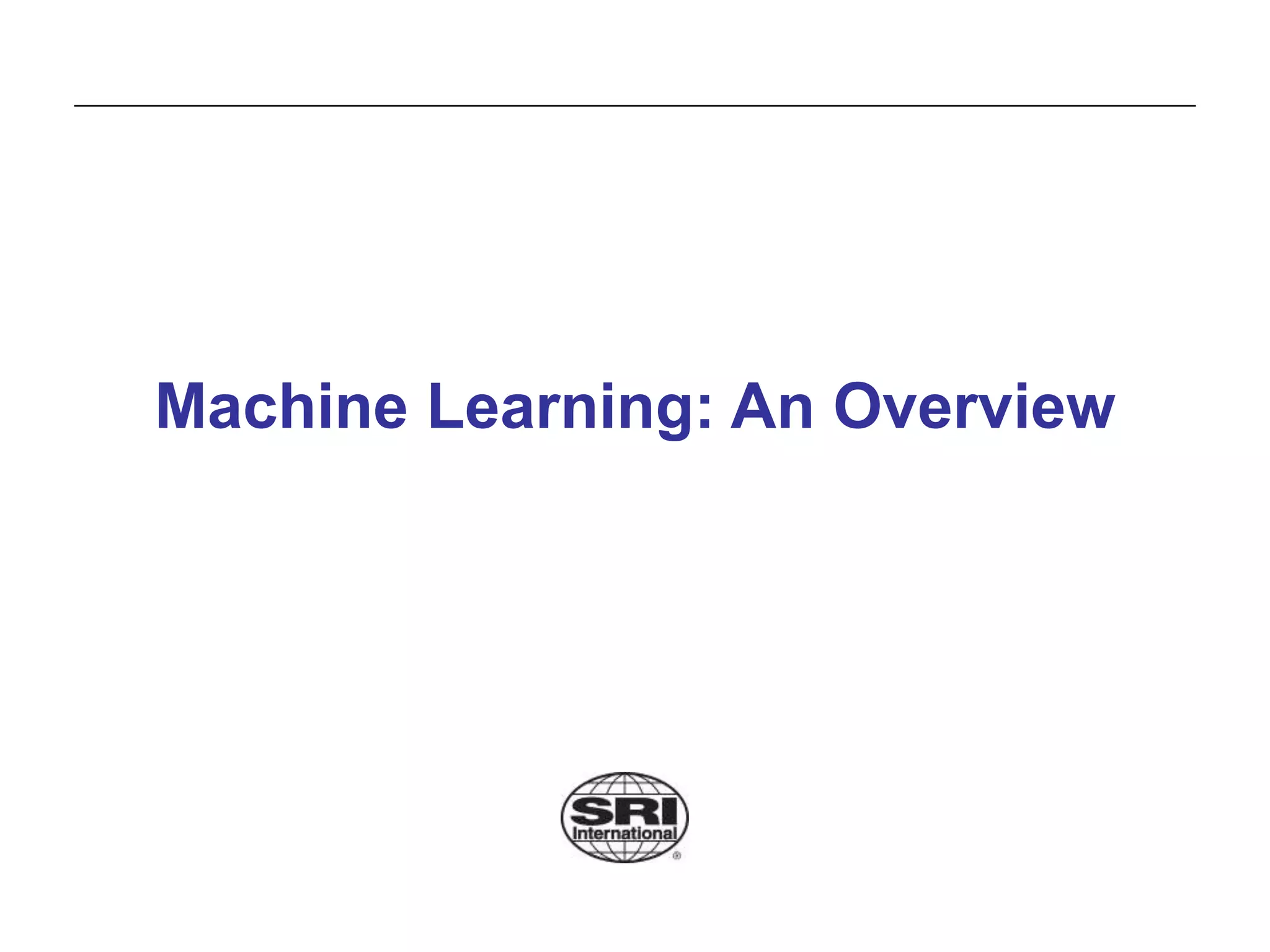

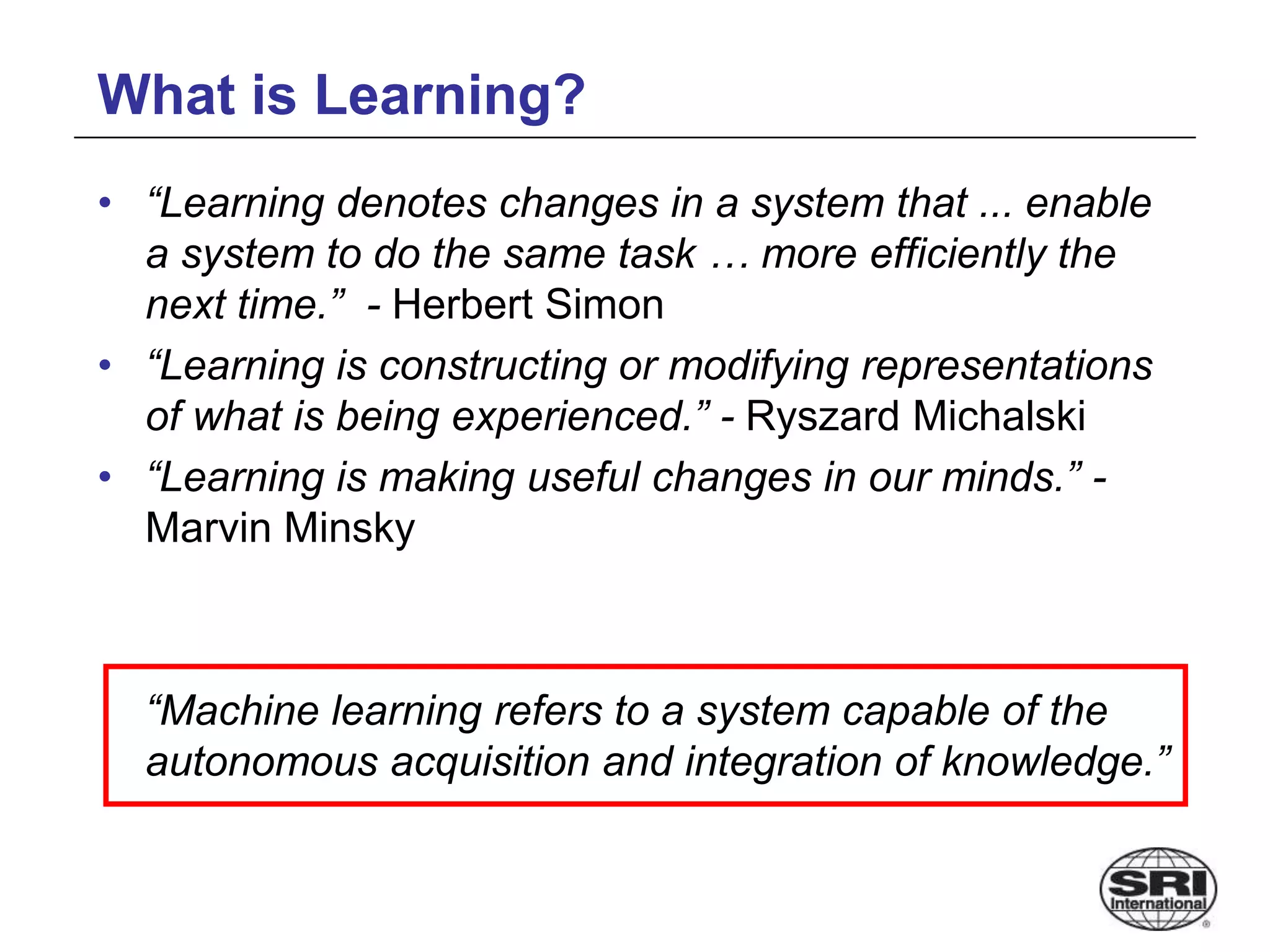
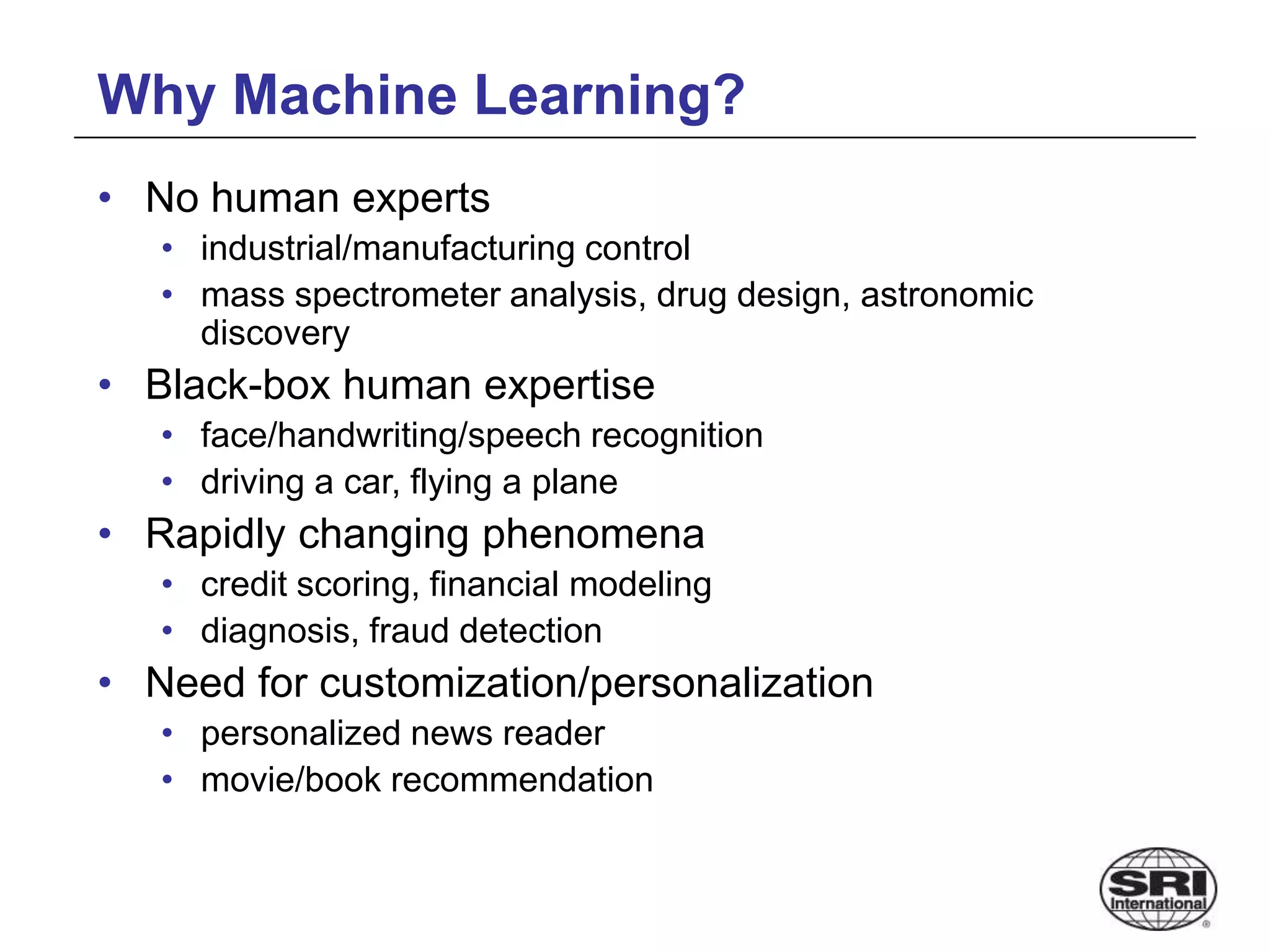
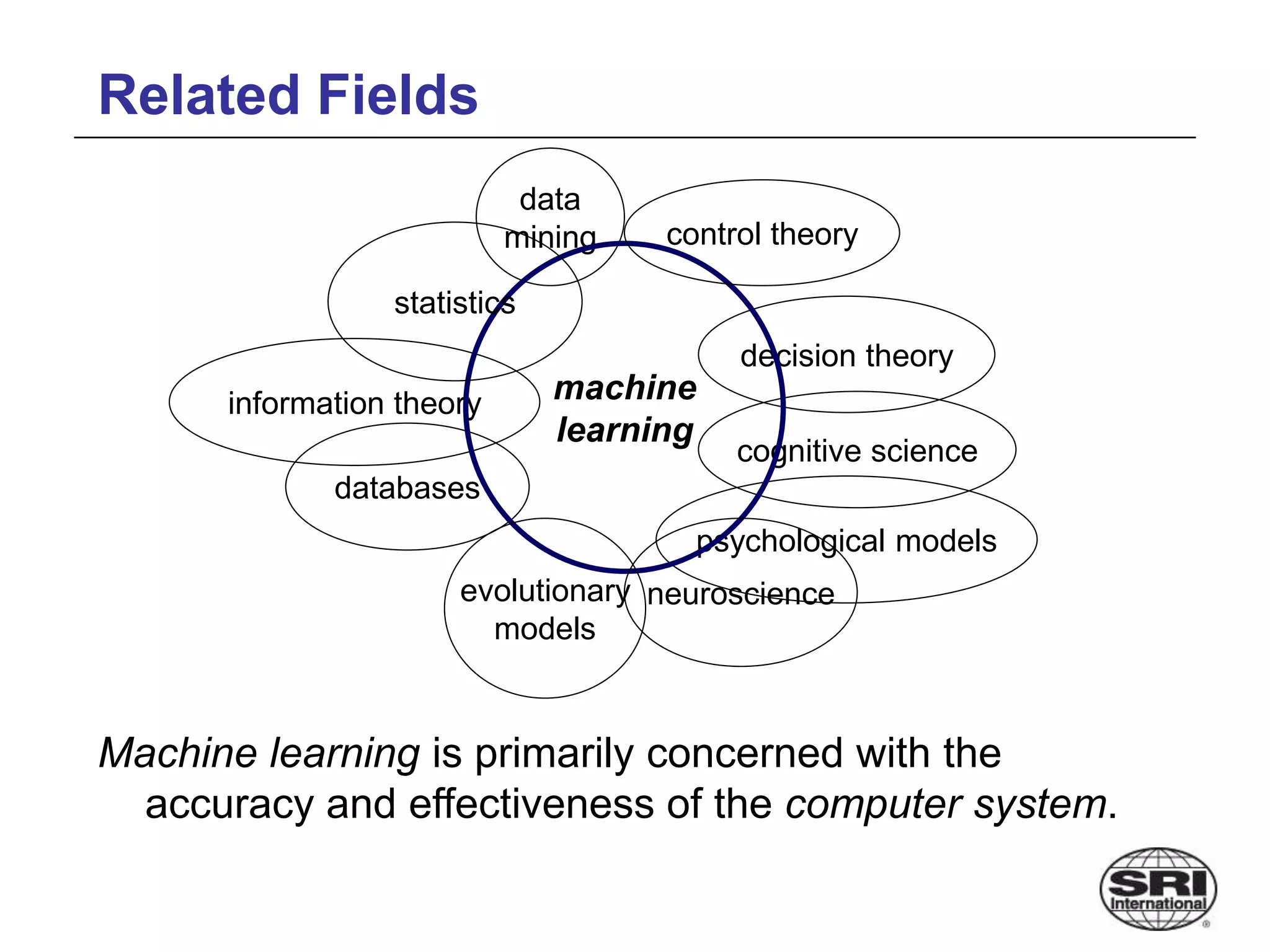
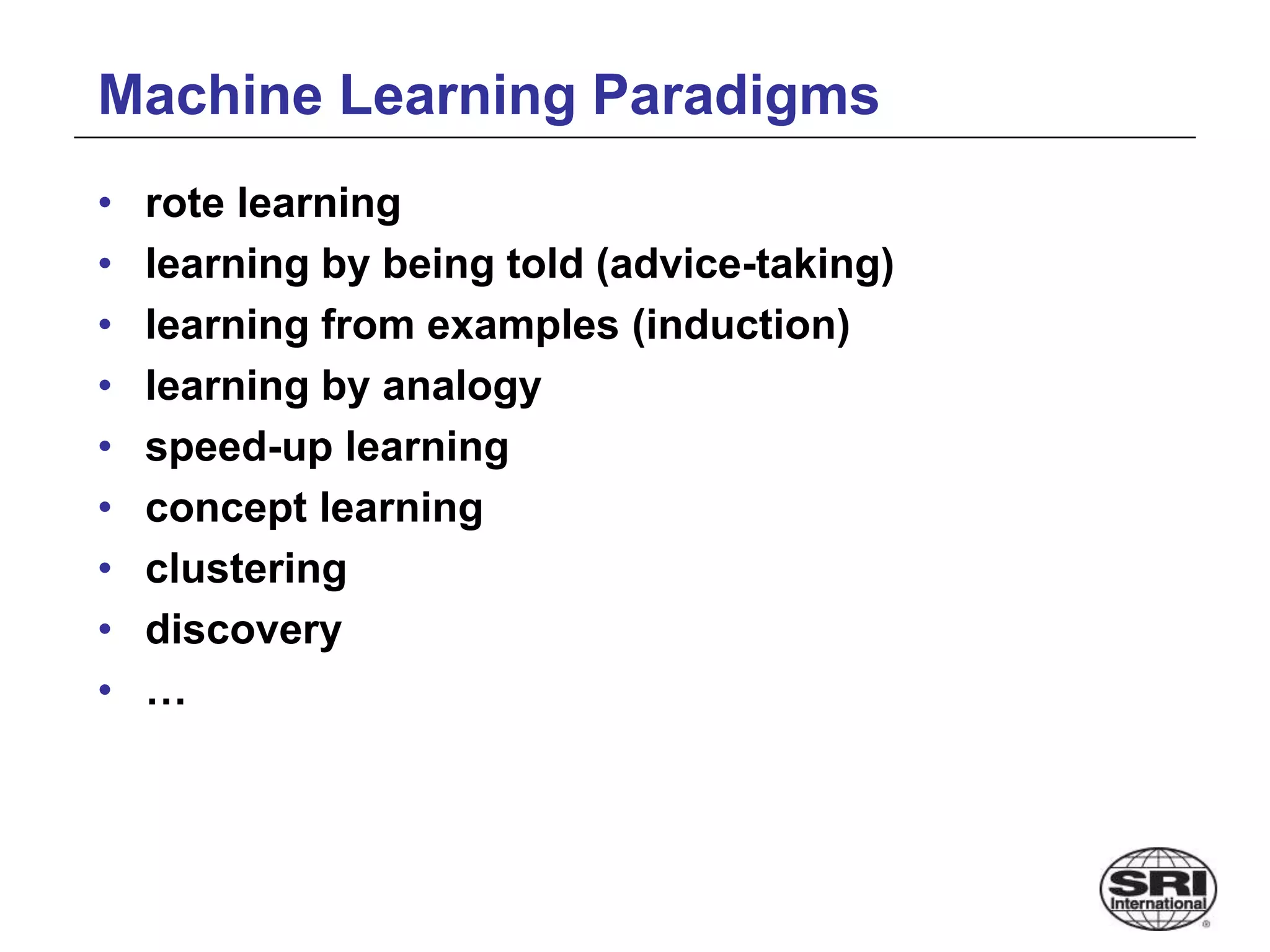

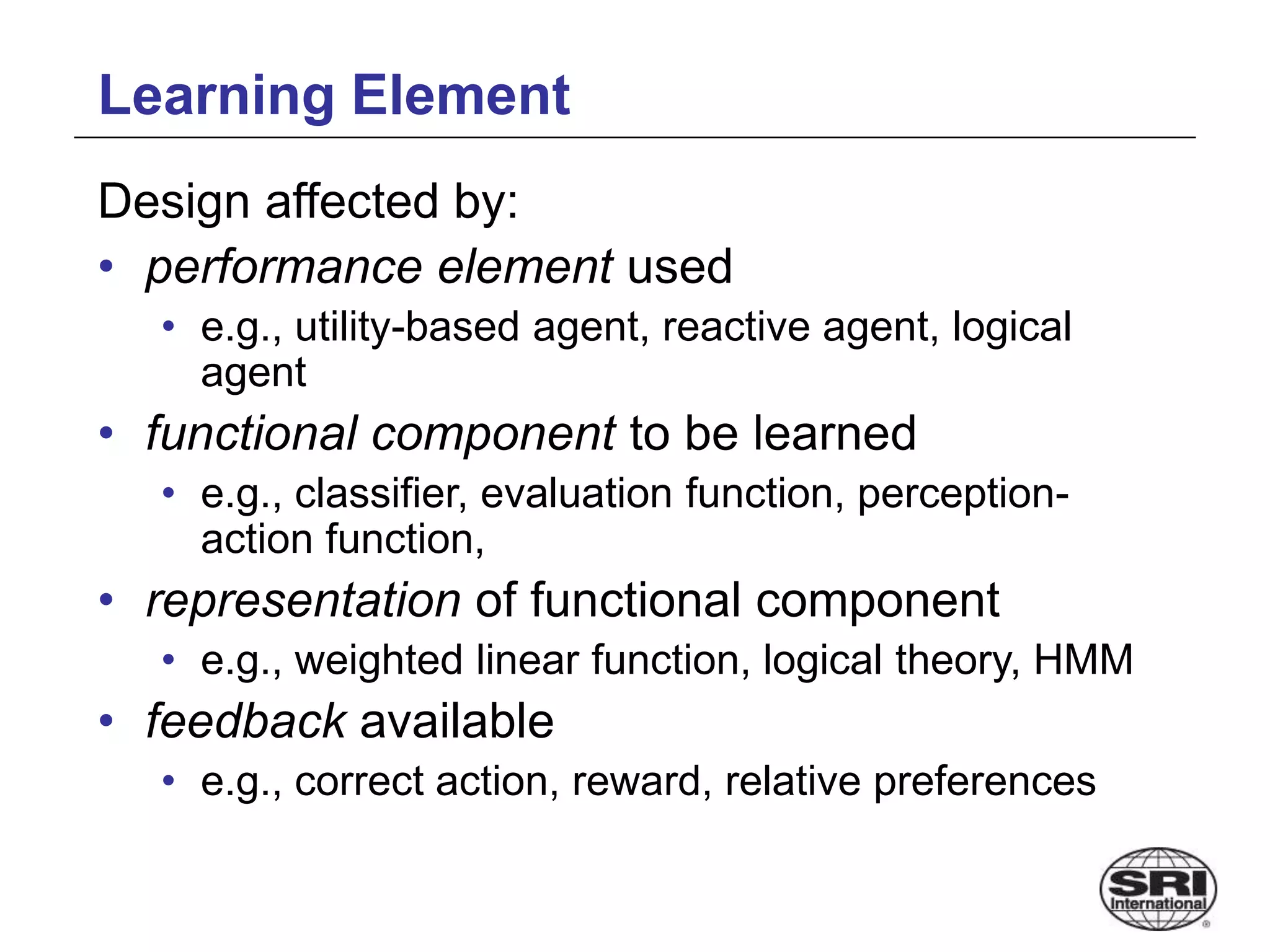
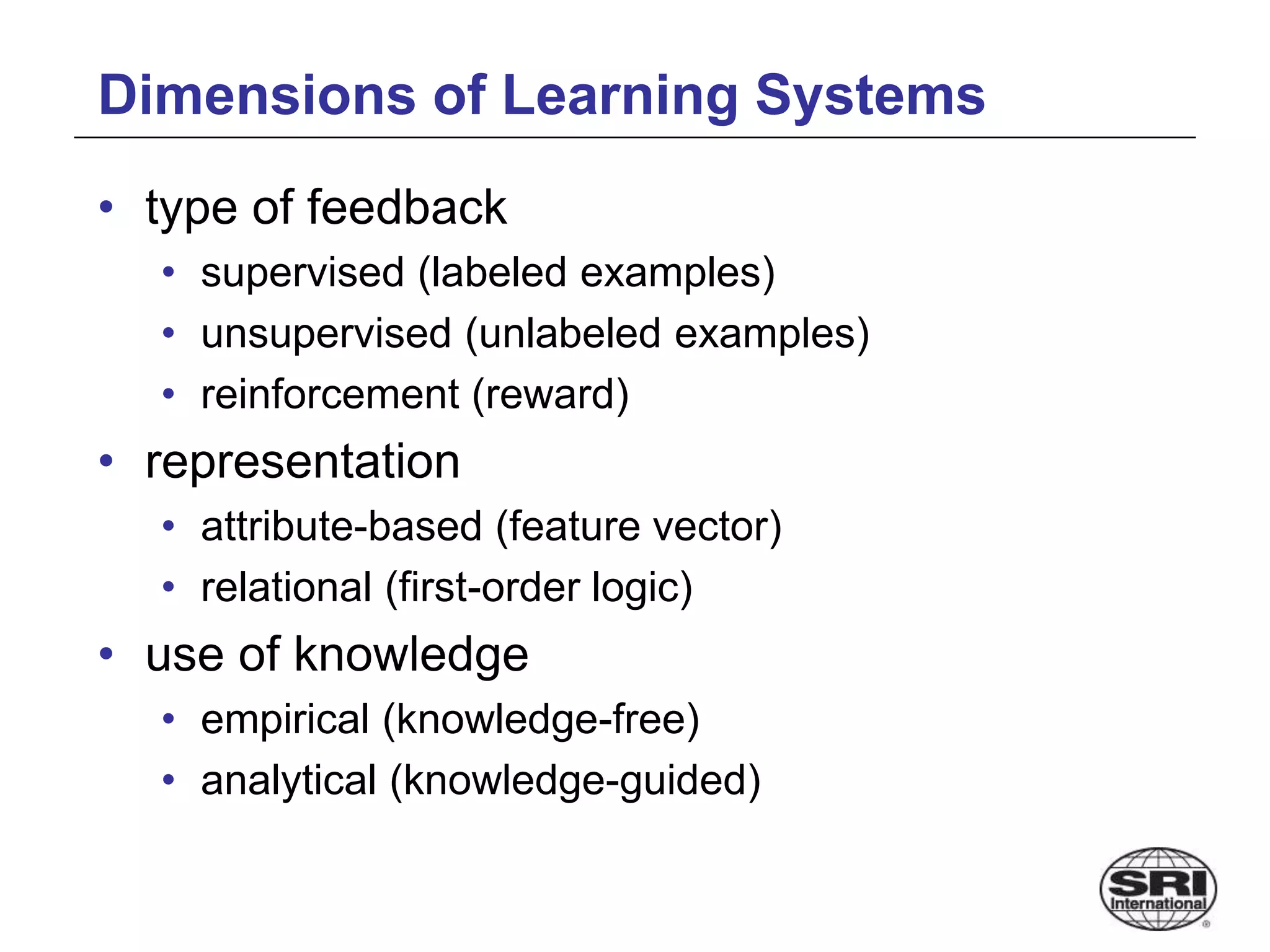

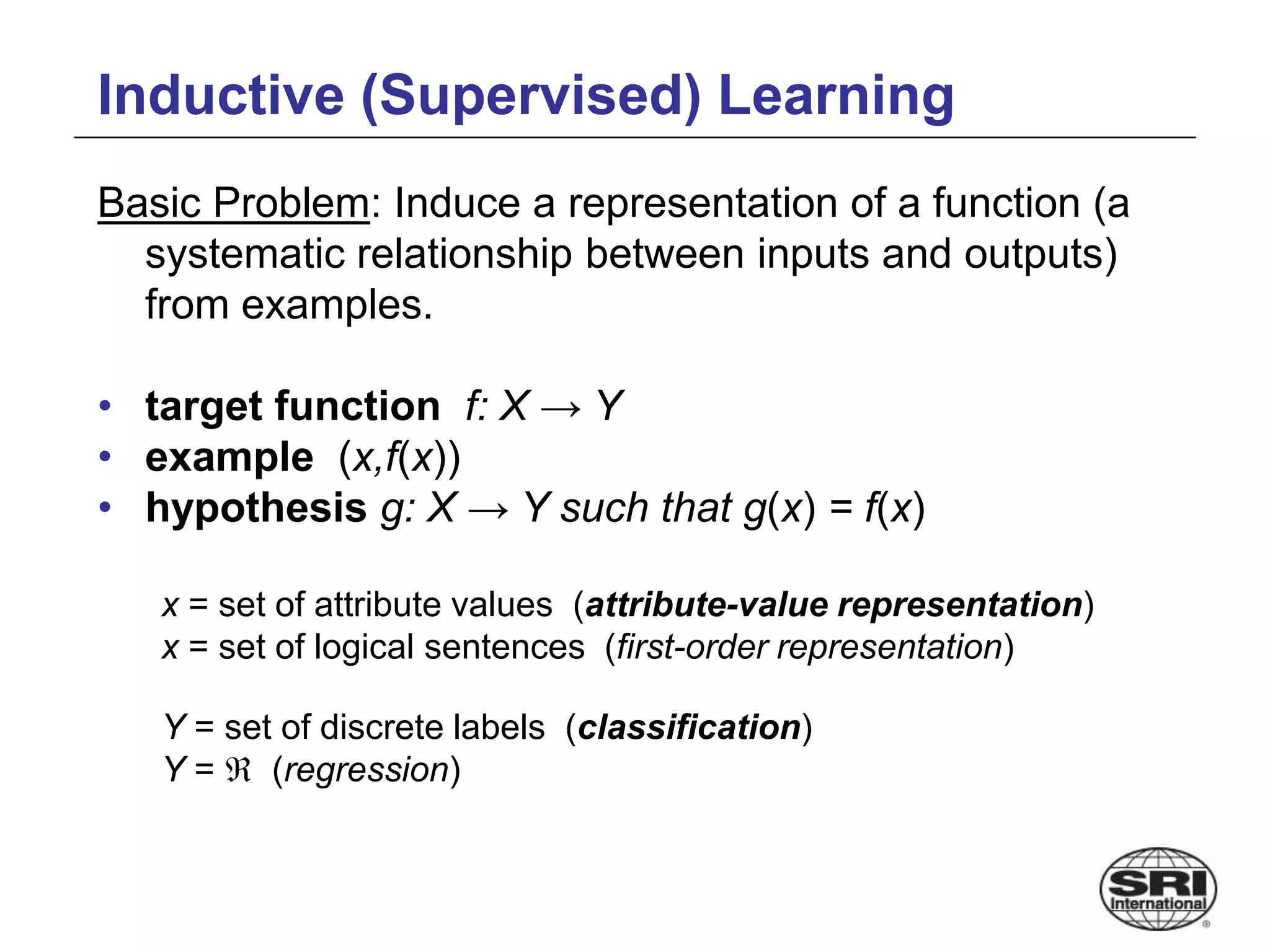
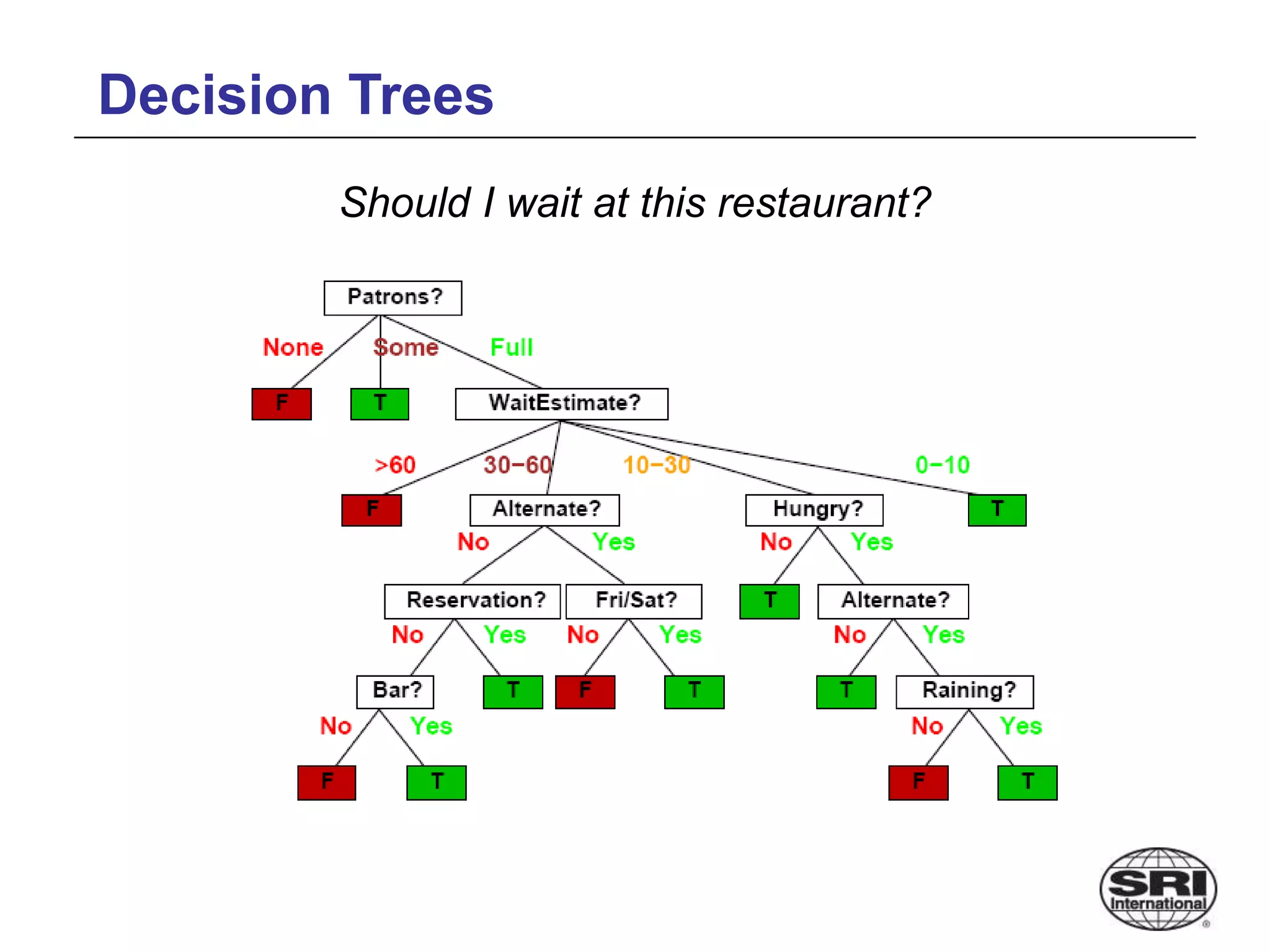

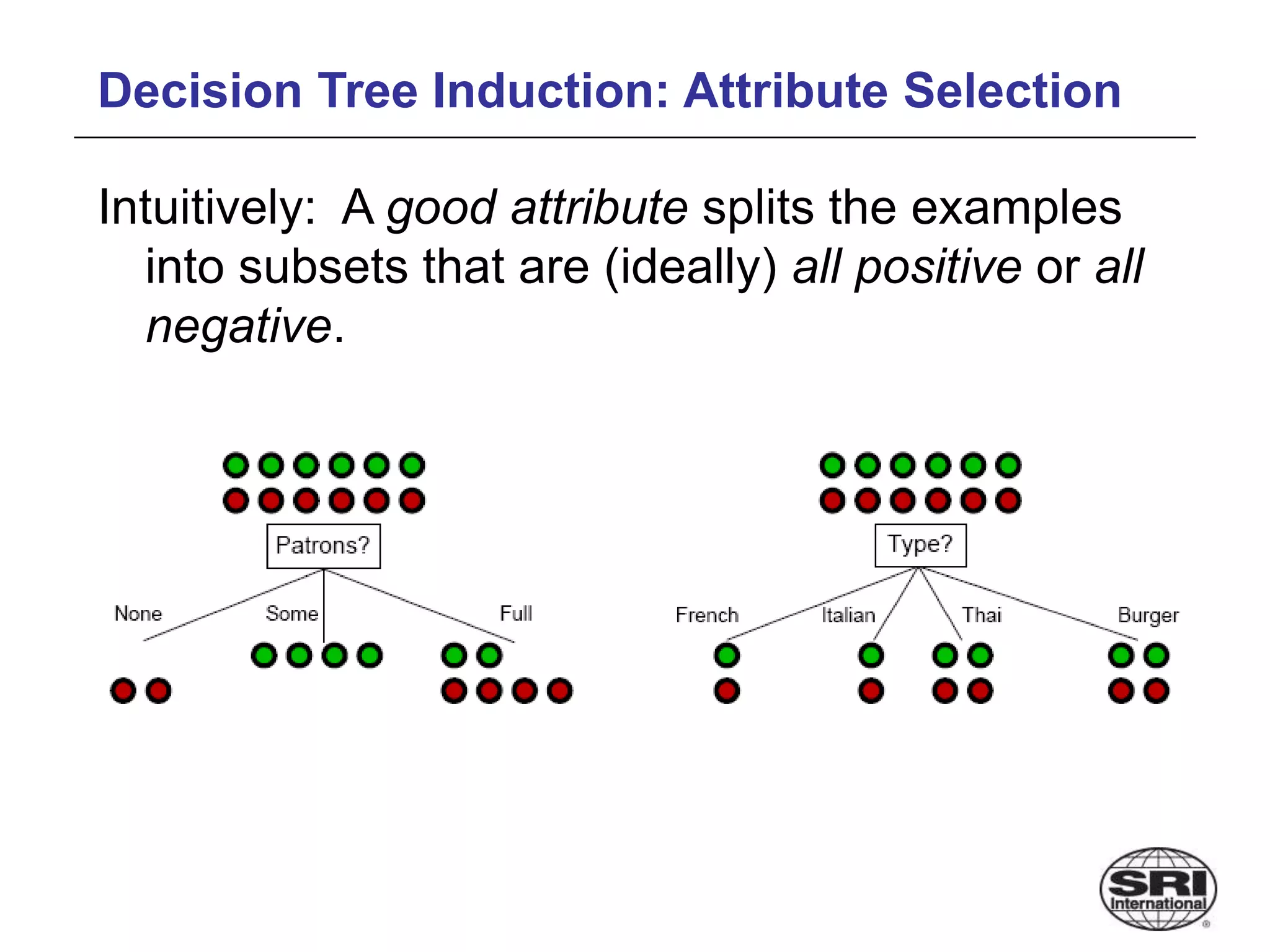

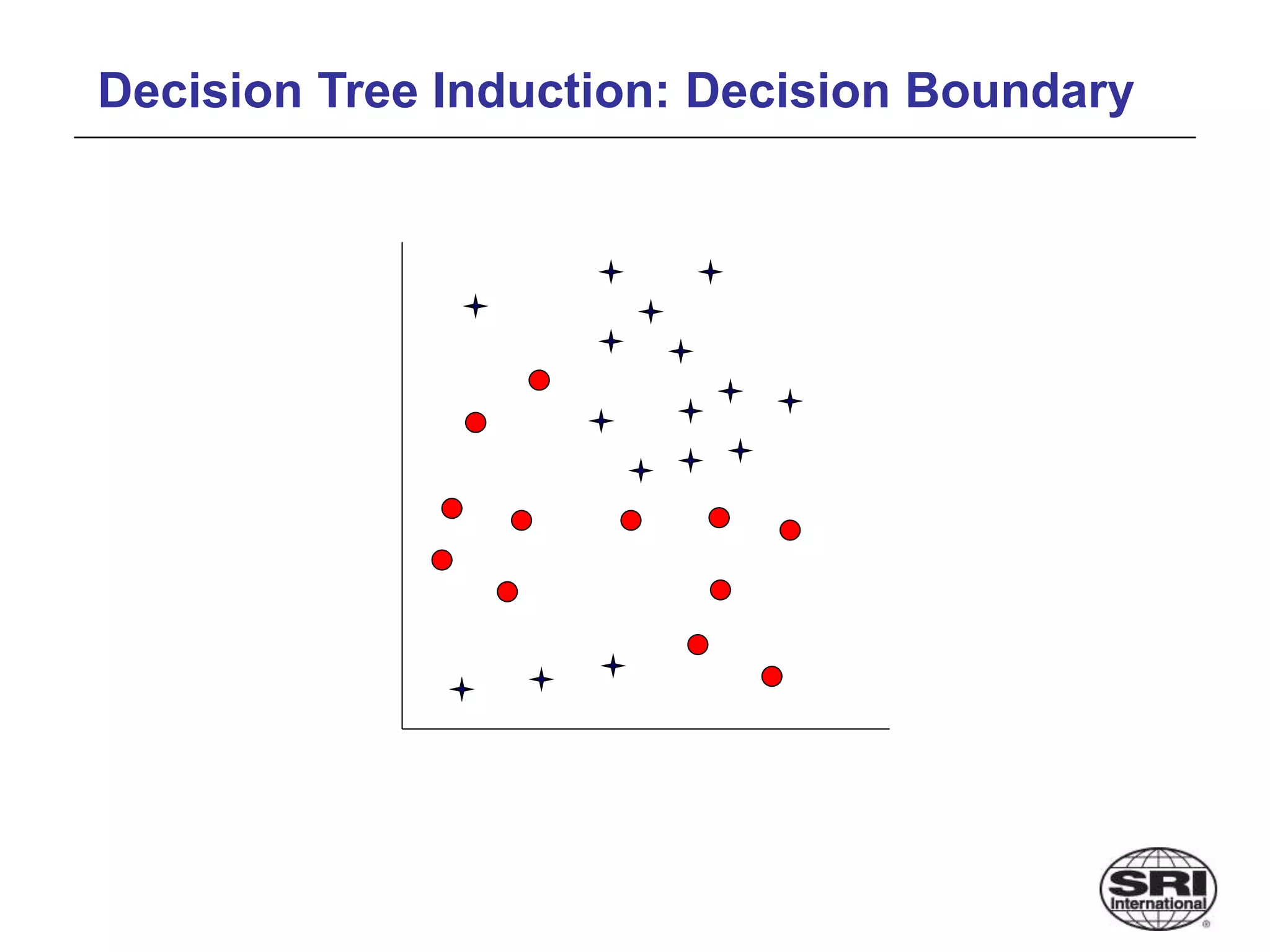

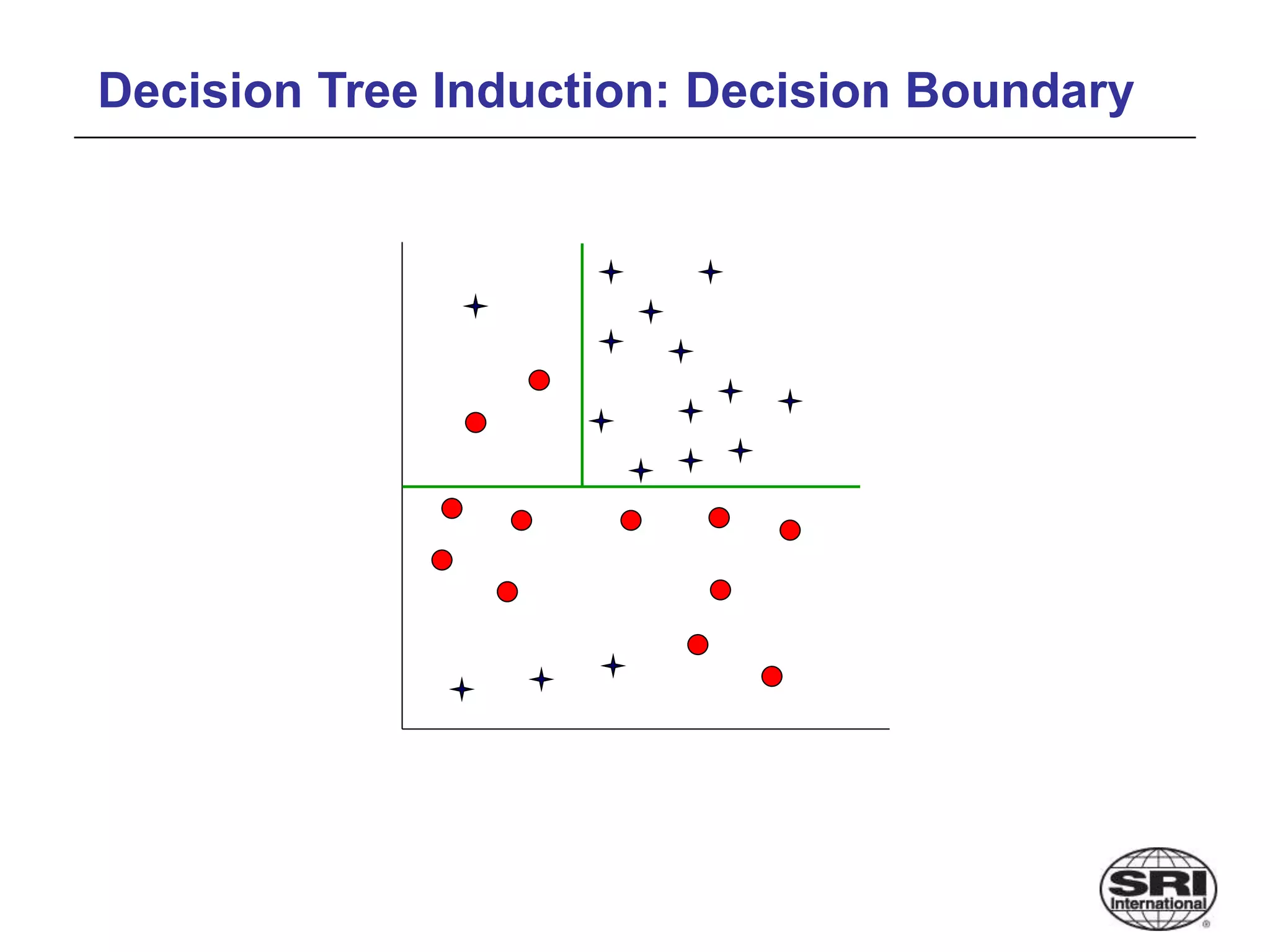
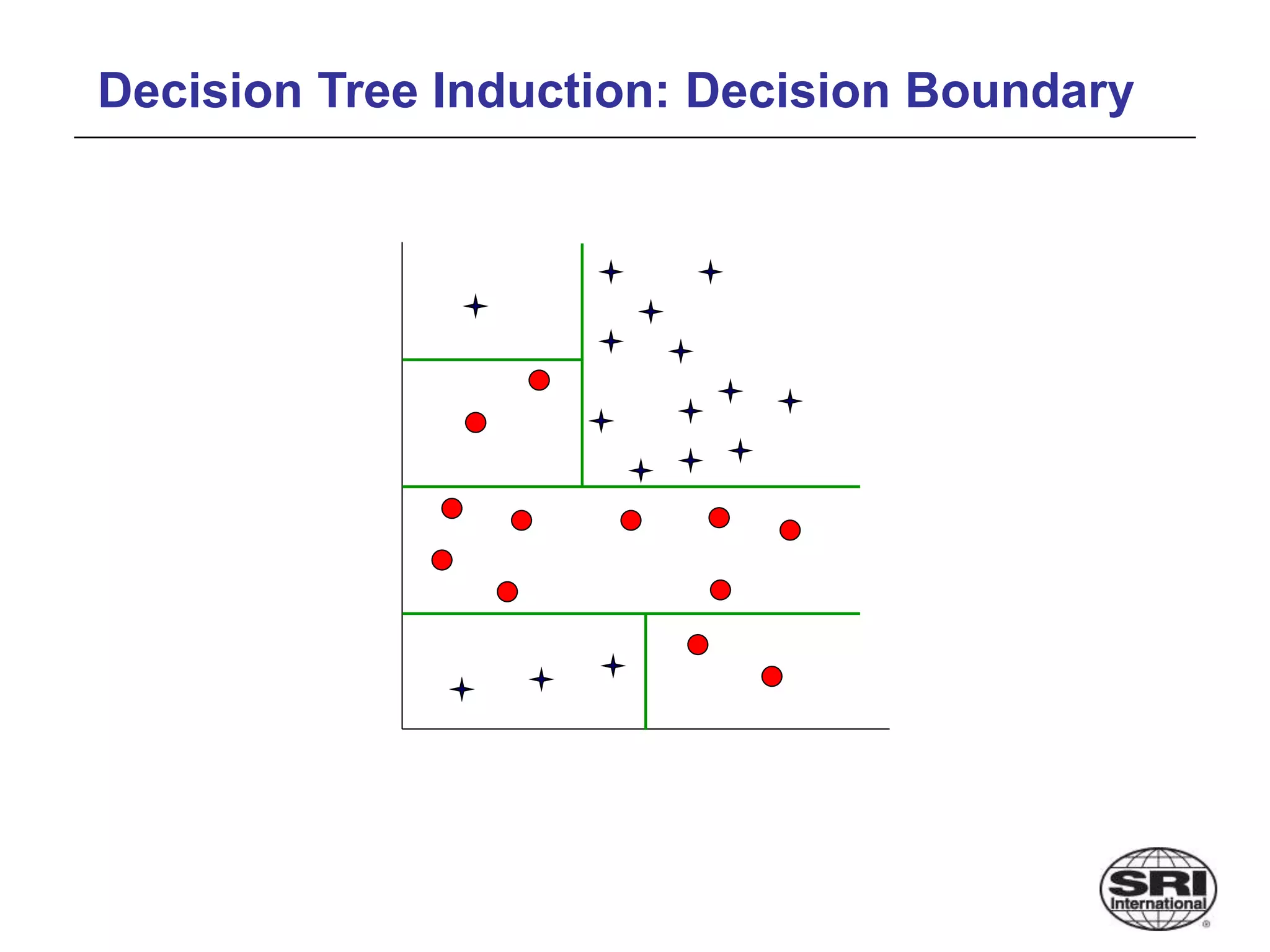
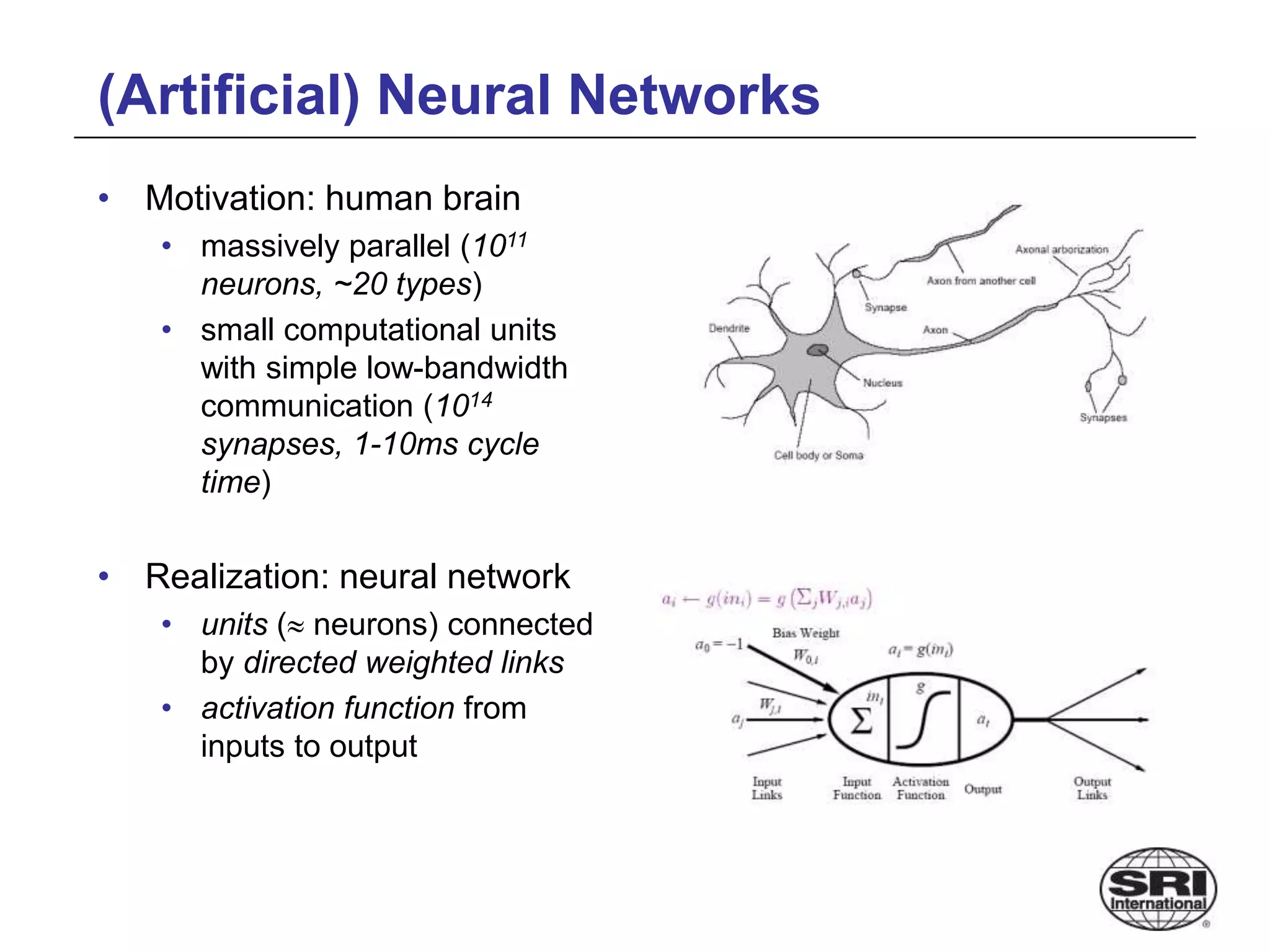
![Neural Networks (continued)
• neural network = parameterized family of nonlinear functions
• types
• feed-forward (acyclic): single-layer perceptrons, multi-layer networks
• recurrent (cyclic): Hopfield networks, Boltzmann machines
[ connectionism, parallel distributed processing]](https://image.slidesharecdn.com/mloverview-221121153300-fb7fa413/75/ML_Overview-ppt-21-2048.jpg)
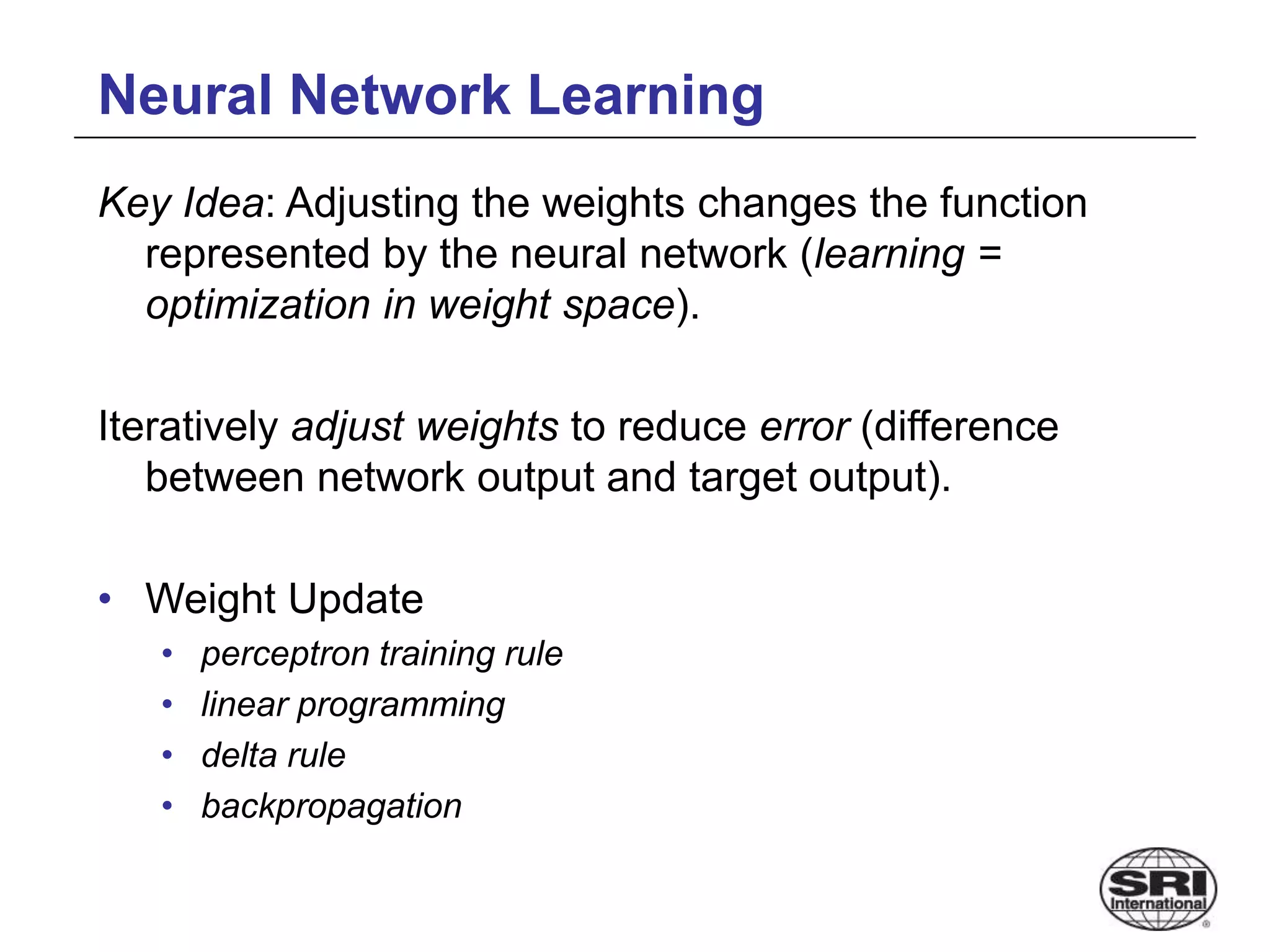

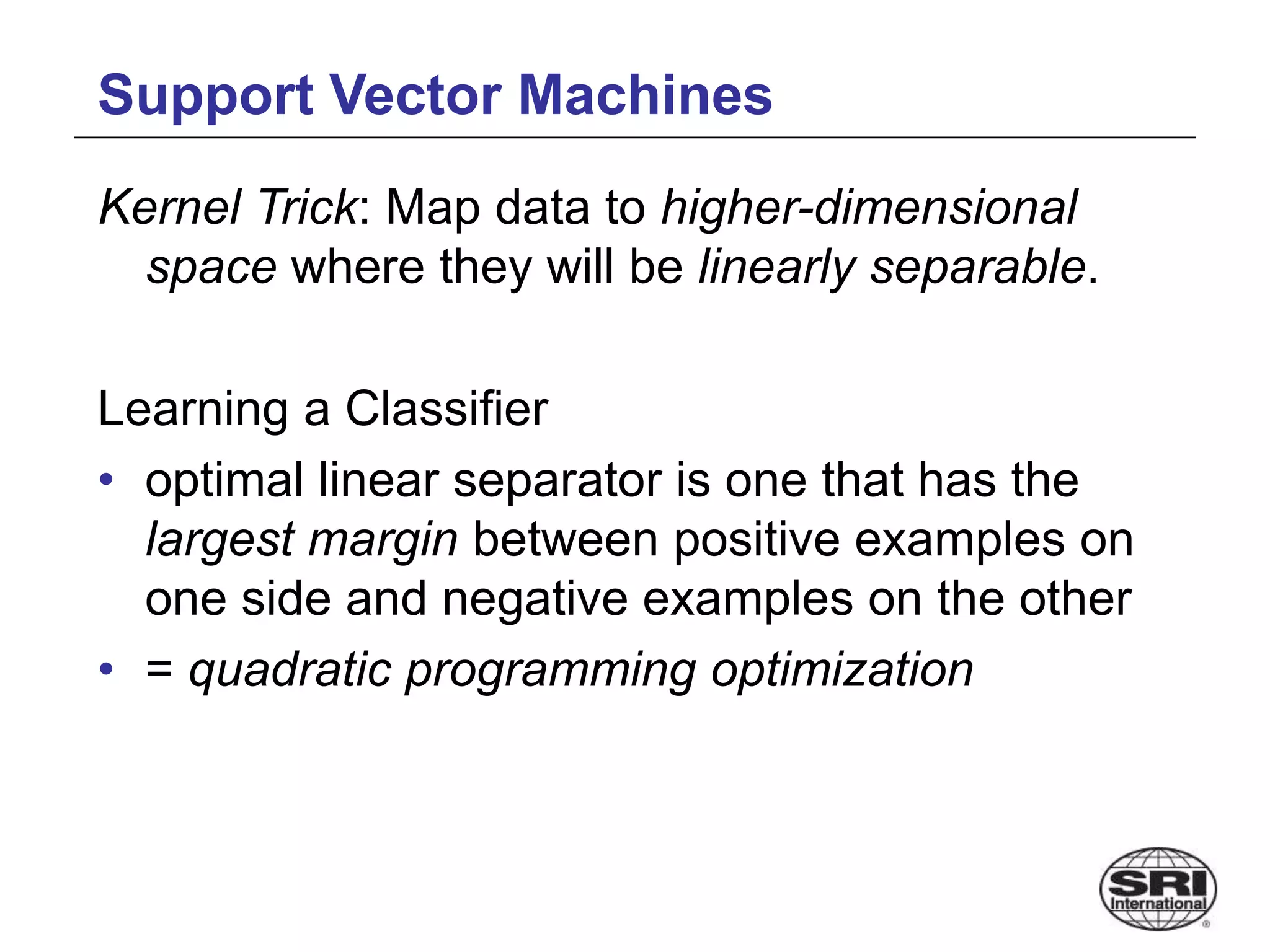
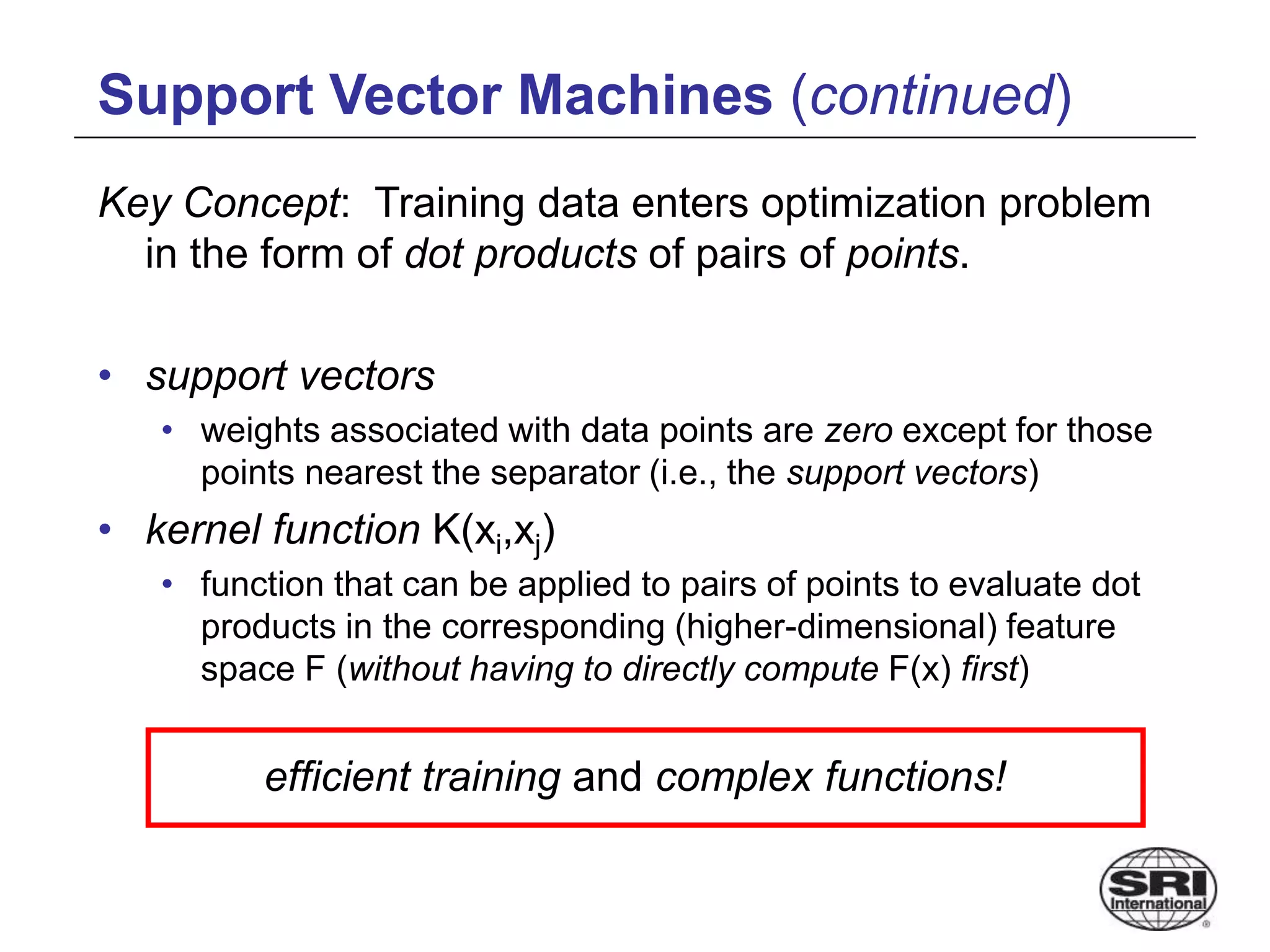
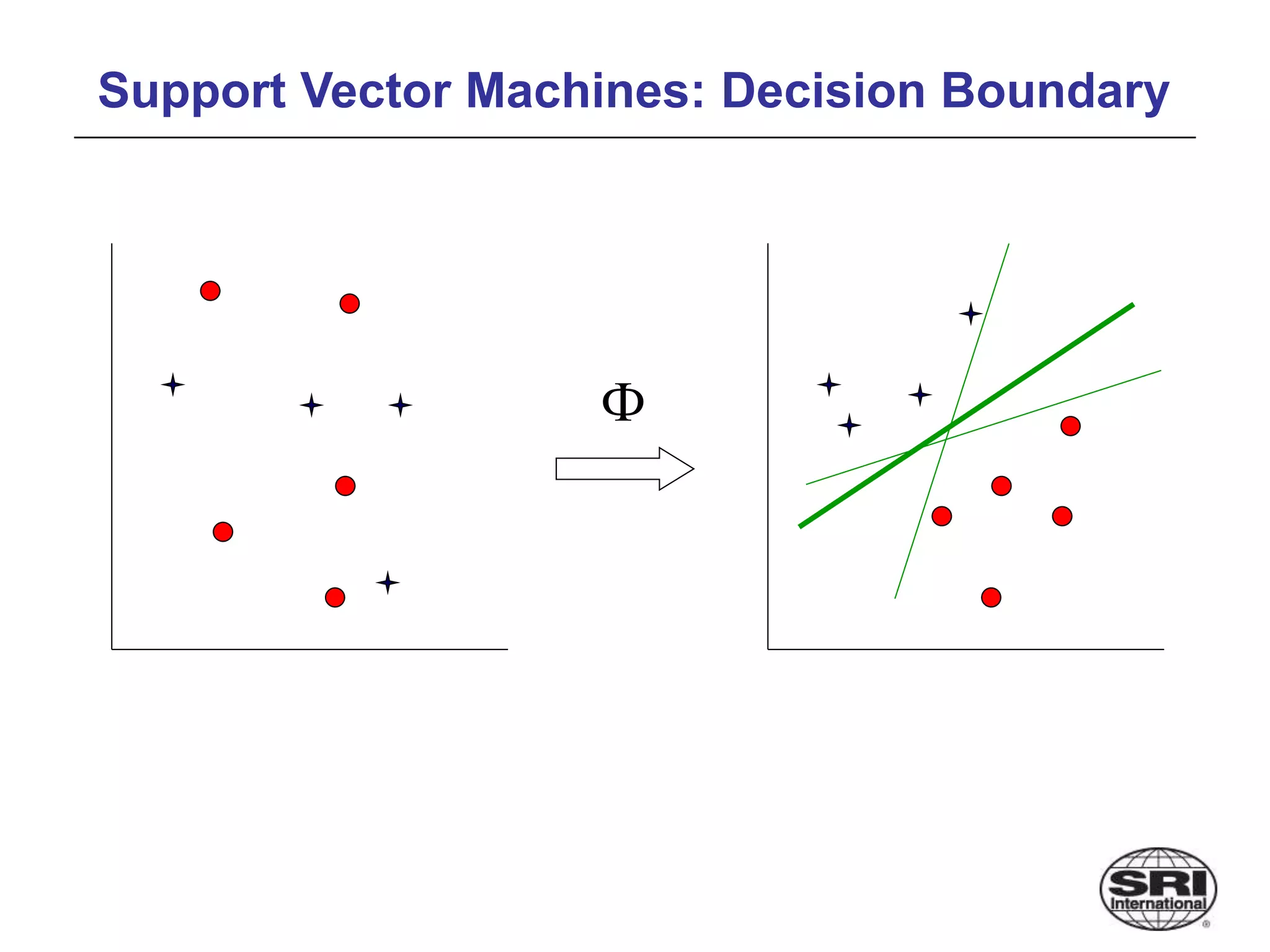
![Bayesian Networks
Network topology reflects
direct causal influence
Basic Task: Compute
probability distribution
for unknown variables
given observed values
of other variables.
[belief networks, causal networks]
A B A B A B A B
C 0.9 0.3 0.5 0.1
C 0.1 0.7 0.5 0.9
conditional probability table
for NeighbourCalls](https://image.slidesharecdn.com/mloverview-221121153300-fb7fa413/75/ML_Overview-ppt-27-2048.jpg)
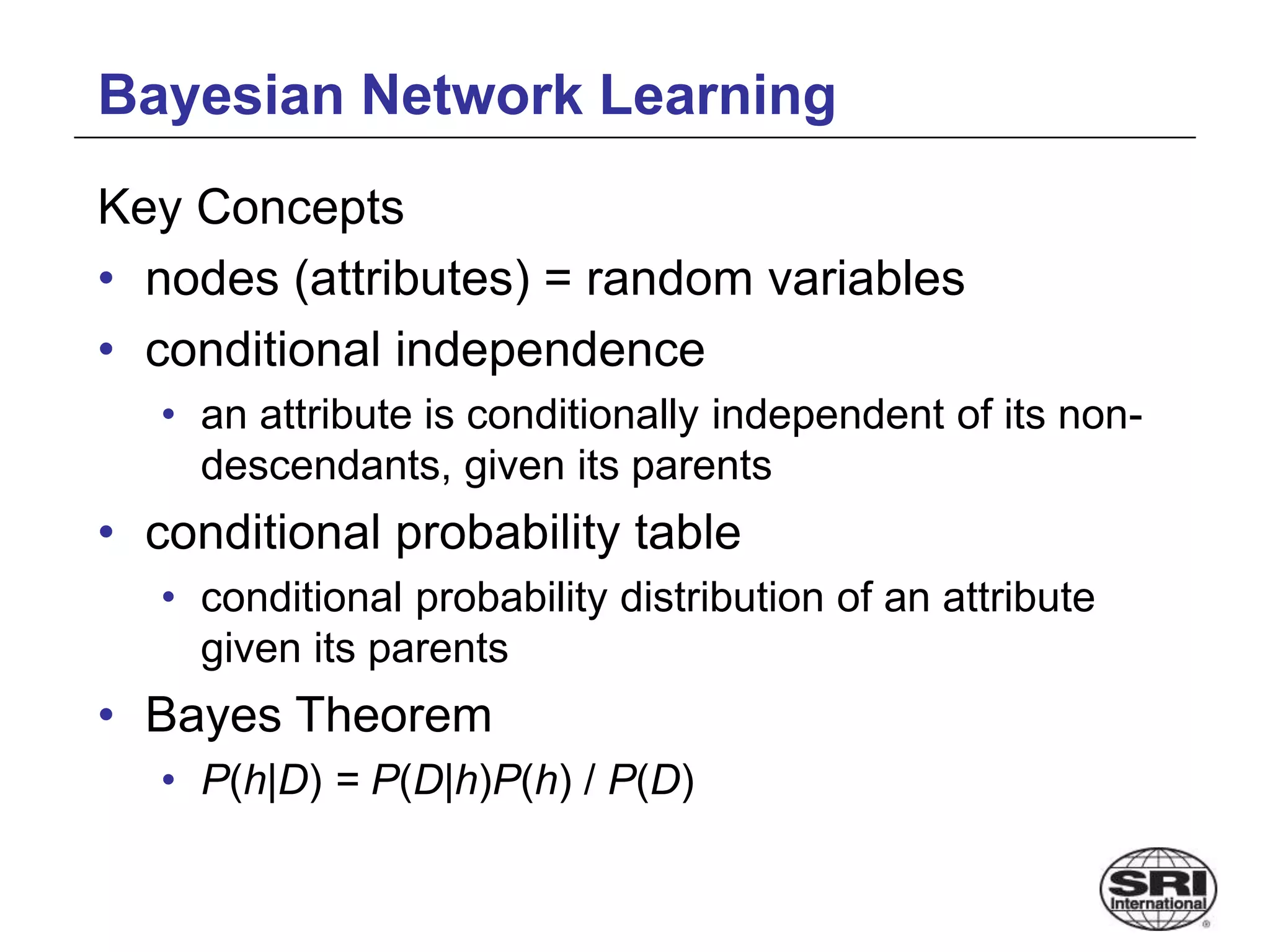

![Nearest Neighbor Models
Key Idea: Properties of an input x are likely to be similar
to those of points in the neighborhood of x.
Basic Idea: Find (k) nearest neighbor(s) of x and infer
target attribute value(s) of x based on corresponding
attribute value(s).
Form of non-parametric learning where hypothesis
complexity grows with data (learned model all
examples seen so far)
[instance-based learning, case-based reasoning, analogical reasoning]](https://image.slidesharecdn.com/mloverview-221121153300-fb7fa413/75/ML_Overview-ppt-30-2048.jpg)


![Learning Logic Theories: Example
Input
• Father(Philip,Charles), Father(Philip,Anne), …
• Mother(Mum,Margaret), Mother(Mum,Elizabeth), …
• Married(Diana,Charles), Married(Elizabeth,Philip), …
• Male(Philip),Female(Anne),…
• Grandparent(Mum,Charles),Grandparent(Elizabeth,Beatrice),
Grandparent(Mum,Harry),Grandparent(Spencer,Pete),…
Output
• Grandparent(x,y)
[z Mother(x,z) Mother(z,y)] [z Mother(x,z) Father(z,y)]
[z Father(x,z) Mother(z,y)] [z Father(x,z) Father(z,y)]](https://image.slidesharecdn.com/mloverview-221121153300-fb7fa413/75/ML_Overview-ppt-33-2048.jpg)
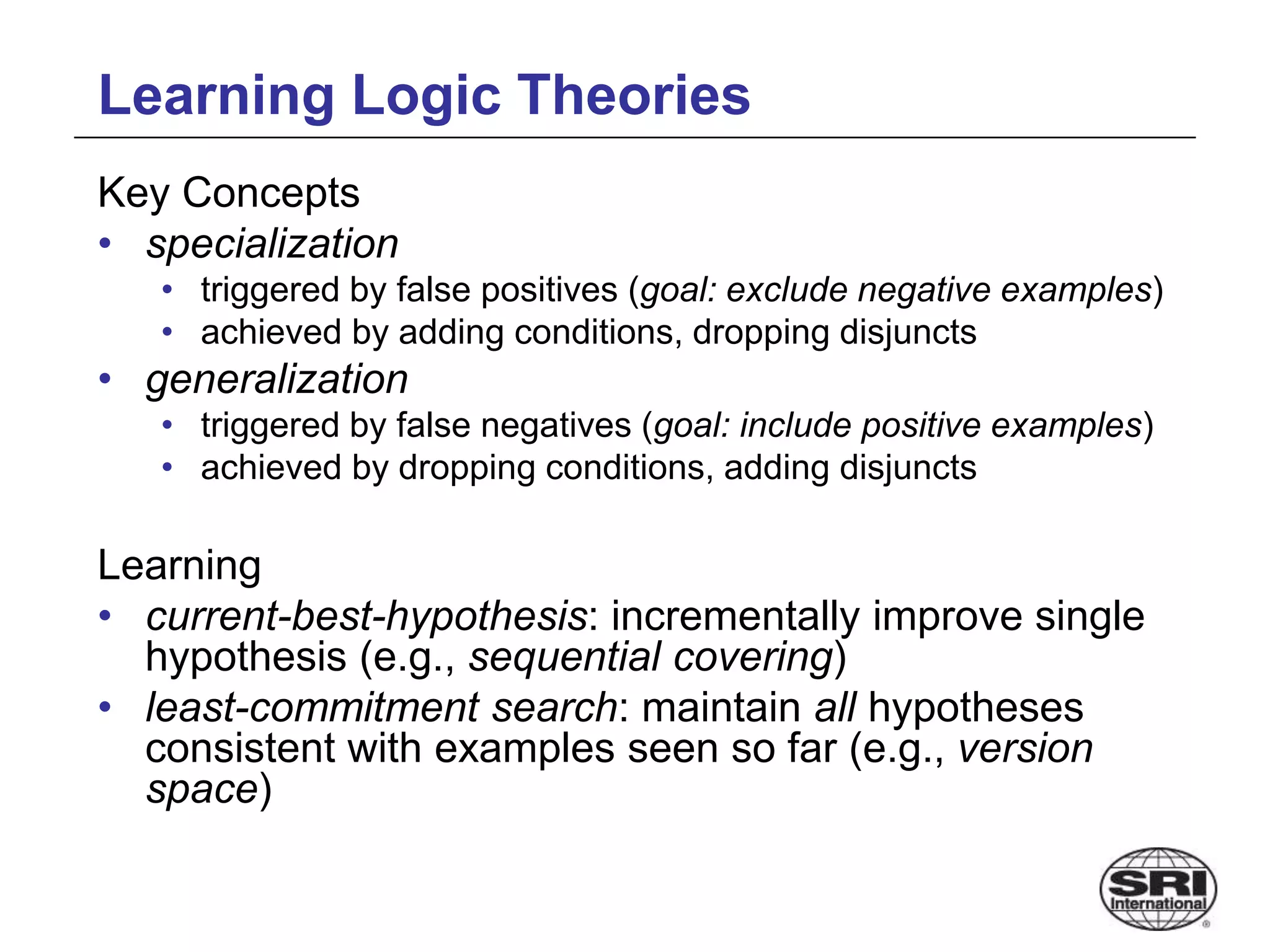
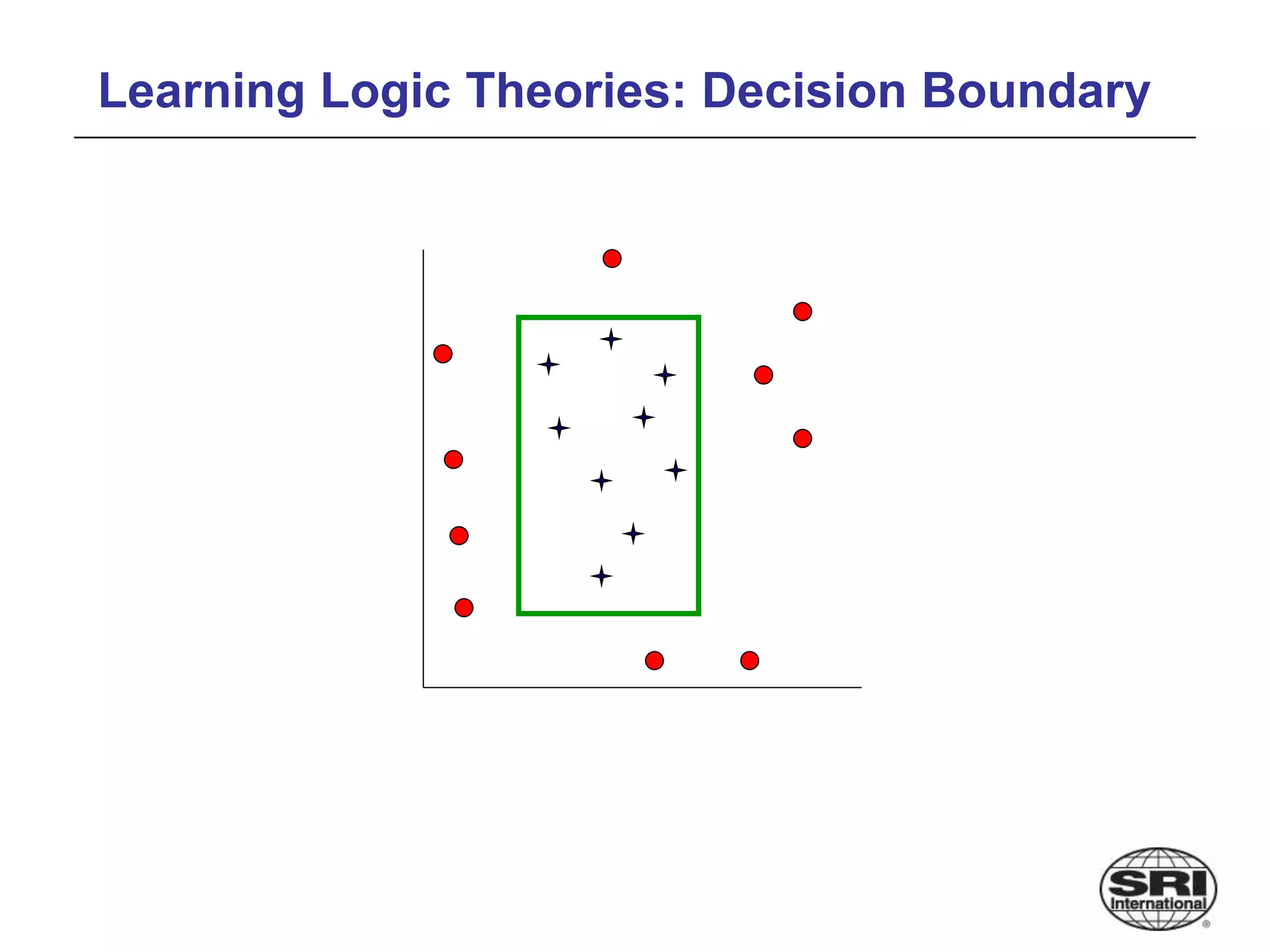
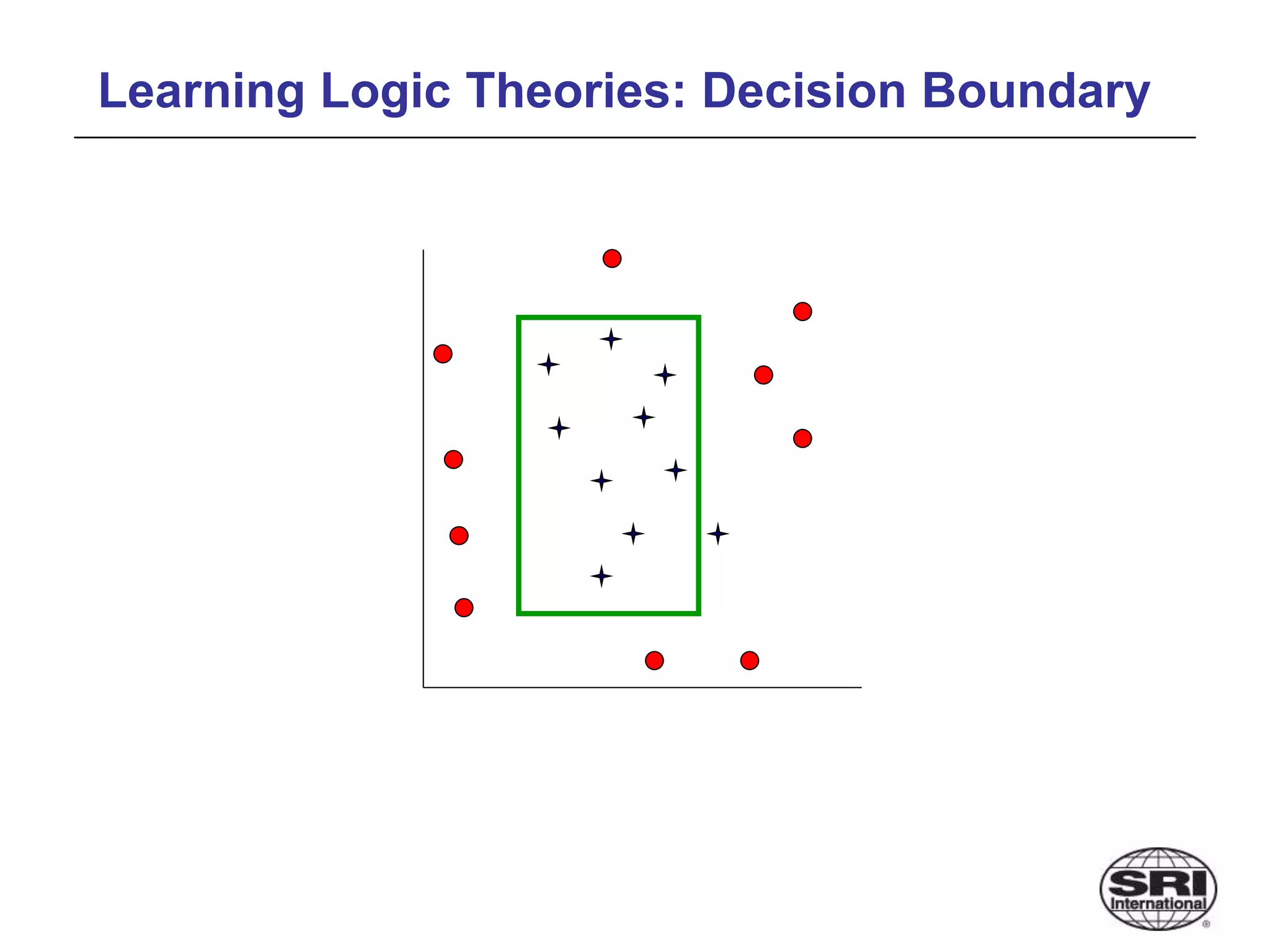

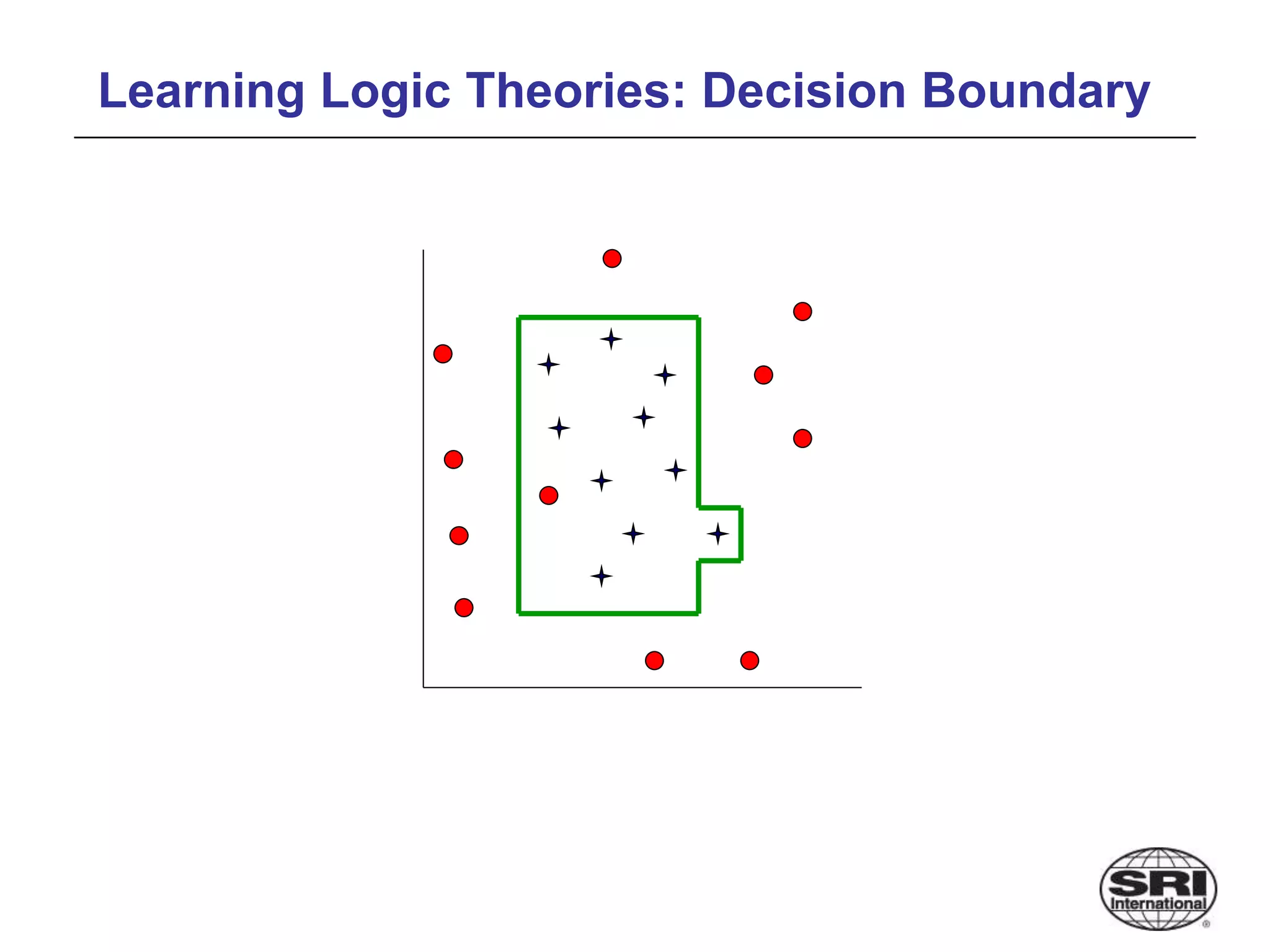
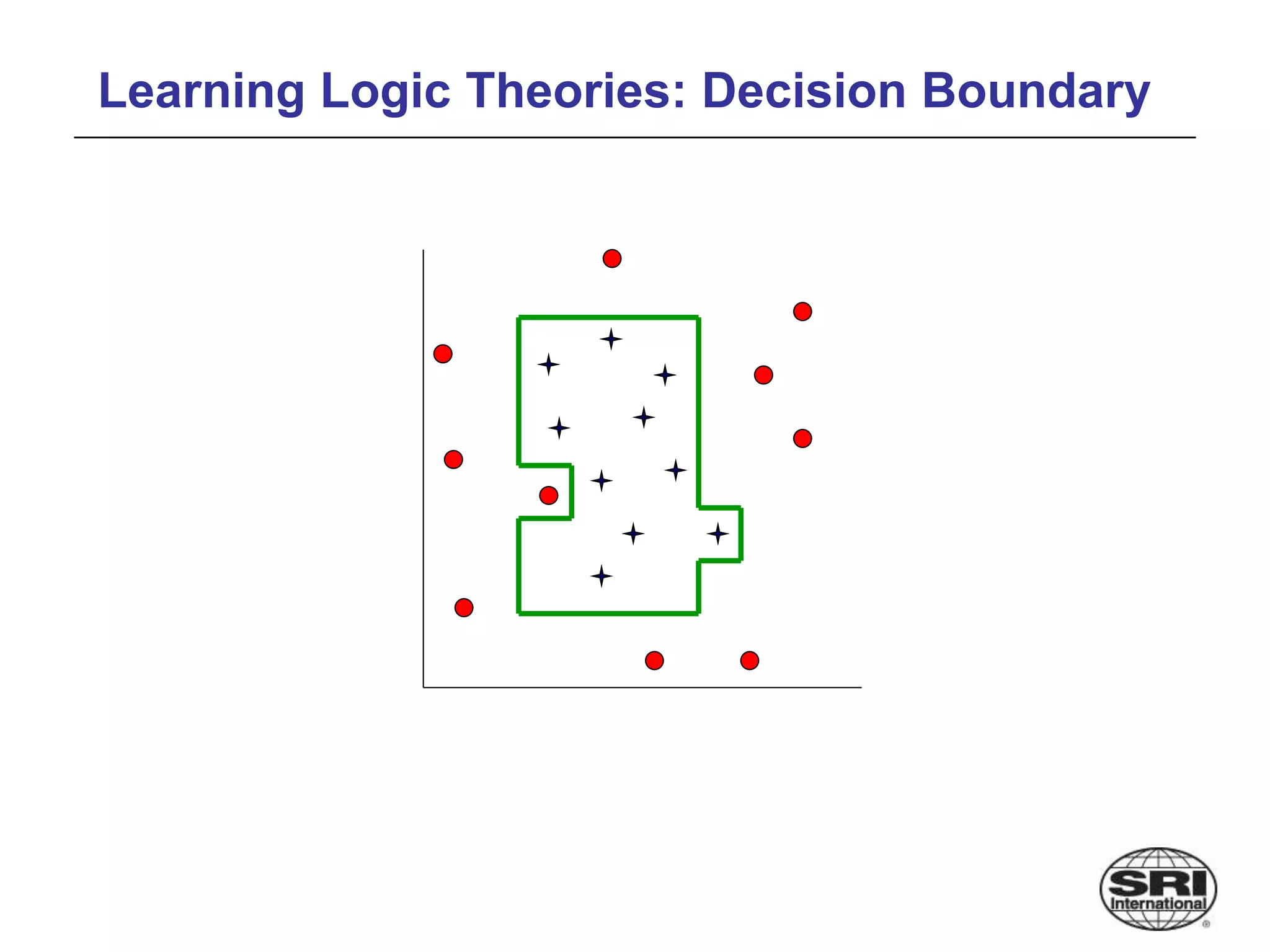
![Analytical Learning
Prior Knowledge in Learning
Recall:
Grandparent(x,y)
[z Mother(x,z) Mother)] [z Mother(x,z) Father(z,y)]
[z Father(x,z) Mother(z,y)] [z Father(x,z) Father(z,y)]
• Suppose initial theory also included:
• Parent(x,y) [Mother(x,y) Father(x,y)]
• Final Hypothesis:
• Grandparent(x,y) [z Parent(x,z) Parent(z,y)]
Background knowledge can dramatically reduce the size of
the hypothesis (greatly simplifying the learning problem).](https://image.slidesharecdn.com/mloverview-221121153300-fb7fa413/75/ML_Overview-ppt-40-2048.jpg)
